5G
description: the fifth generation technology standard for broadband cellular networks, known for high speed and low latency
58 results

Other Pandemic: How QAnon Contaminated the World
by
James Ball
Published 19 Jul 2023
TURN OFF 5G by disabling LTE!!!’34 Leaving aside everything else wrong with that tweet, the influencer appeared not to understand that radio waves don’t seek out a target. If an area has 5G, it has 5G whether your phone is turned on or not. Other people, who apparently understood that logic, attacked and burned down 5G towers in their area, prompted by the international scare stories. In the UK, ninety attacks on phone masts were reported during the first 2020 lockdown,35 while multiple UK telecoms engineers received death threats.36 In the US, meanwhile, President Trump was characteristically making Covid-19 all about him – initially promising that it would all ‘miraculously’ be over by spring,37 and then complaining with increasing frequency about what the pandemic was doing to his re-election prospects, as cases hit 100,000 and unemployment hit a temporary high of 38 million.38 (As of April 2022, the US had a total of more than 80 million cases – with Trump among them – and 1 million deaths.)39 Given that the US QAnon community at that time was still entirely focused on Trump as the leader of a resistance against the deep state cabal, it was quickly resolved that it must be a plot.
…
It had started in China, a long-time adversary of President Trump, who had engaged in a multi-year trade war with the nation.4 Wuhan, the city in which Covid was discovered, has an Institute of Virology, which studied coronaviruses.5 It prompted governments to take the most drastic, and often the most authoritarian, measures outside of wartime in a century or more.6 It came alongside the global rollout of 5G mobile data technology.7 Thanks to the desperate search for a vaccine, Big Pharma (almost no one’s favourite industry) stood to gain billions.8 The list goes on and on, with far too many potential conspiratorial offshoots to list. In addition to this, for millions of people across the globe – but by no means everyone – lockdown restrictions meant they had far, far more free time on their hands, and no ability to go out of the house to kill it.
…
This theory was based in part on some poorly judged (with hindsight) comments Gates had made a few years before Covid-19.59 – Conspirators regularly suggest that any heart attack or unexplained death of an athlete or celebrity is due to the vaccine, which has been covered up.60 Alternative theories combine the Gates conspiracies with the 5G one, suggesting that there is a microchip in the vaccine intended to allow people to be controlled by Gates via 5G.61 Viral posts show routine circuit diagrams captioned with ‘The Russians have managed to remove the nanochips from the Pfizer vaccine and have published a function diagram.’ Another claimed that ‘any Bluetooth app [can] literally track those that have been vaccinated within 100 meters from you’.62 Some conspiracies suggest the chips will be fatal when activated by a 5G signal, meaning billions will drop dead all at once.63 Other combinations include much of the above, but giving Anthony Fauci a role either alongside or in place of Bill Gates. People essentially mix and match the conspiratorial ingredients to their taste, picking and choosing from the huge array of online content still in circulation years into the pandemic.
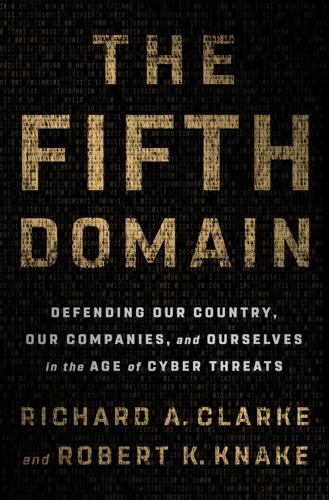
The Fifth Domain: Defending Our Country, Our Companies, and Ourselves in the Age of Cyber Threats
by
Richard A. Clarke
and
Robert K. Knake
Published 15 Jul 2019
Those newly ubiquitous boxes will also be able to handle vastly more devices simultaneously. The international 5G standard calls for the ability to support one million devices in one square kilometer. Devices in your house or apartment, such as your TV, laptop, or nanny cam, might connect wirelessly directly to the 5G tower and, thereby, to the internet. The same thing may happen in your office building, where elevators, vending machines, surveillance cameras, printers, and copiers may all link directly. Just plug them in and they will be on the internet. You might be able to get rid of your wi-fi altogether, although that is a matter of debate among the experts.
…
W., 6 Bush, George W., 6, 11, 88, 89, 96, 113, 130, 135, 156, 222, 228 California, 117, 123 cameras, 289–90 Carlin, John, 125 cars, driverless, 266–67, 269–70 Carter, Ash, 193, 225 Causes of War, The (Van Evera), 100 Center for Internet Security, 117 Center for Strategic and International Studies (CSIS), 89, 101, 110, 113 certified information security manager, 146 certified information system auditor, 146 certified information systems security professional, 146, 149 Chamber of Commerce, 44, 109–11, 113, 118 Chaudhuri, Swarat, 80 Chemical Facility Anti-Terrorism Standards, 114–15 Chen, Adrian, 219 Cheney, Dick, 275 chief information officers (CIOs), 72, 300 chief information security officers (CISOs), 5, 33, 40, 49, 56, 64, 65, 69, 72, 87, 151, 170, 177, 178, 244, 300 China, 5, 24, 28, 33–34, 39–41, 43, 46, 50, 97, 159–60, 166, 182, 187, 195, 196, 198, 214, 217, 241, 242, 248, 252, 272 5G and, 267–68 internet and Great Firewall of, 87, 205, 206, 208, 210, 211, 215 People’s Liberation Army, 26, 28, 176, 305 quantum computing and, 256, 259, 260, 262, 264 China Telecom, 119–20 CIA, 23–24, 37, 110, 124, 152, 173, 194 Citibank, 8, 38, 136, 284 civil service system, 171, 173 Clarke, Richard A., 3–4, 6, 10–11, 21, 59, 65, 89, 124–25, 156, 168, 220, 254, 291 Cyber War, 6–7, 13, 26, 37, 78, 192, 200 Warnings, 162, 223 CLEAR, 137 Clinton, Bill, 3–4, 6, 11, 88, 113, 168, 221 Clinton, Hillary, 223, 232–33 Clipper chip, 124 cloud, 5–6, 71–77, 104, 206, 215, 291–92, 298, 300 CLOUD Act, 214, 215 Cloudflare, 87, 119 Coats, Dan, 26, 159 Cole, Alma, 170 Columbia University, 102 Comey, James, 124, 125 Commerce Department, 88, 140 see also National Institute of Standards and Technology Comprehensive National Cyber Initiative, 96 CompTIA Security+ certification, 146 Computer Fraud and Abuse Act, 100 Congress, U.S., 99, 109, 114, 116–18, 124, 130, 144, 159, 165–66, 171, 172, 178, 196, 214, 228, 231–33, 259, 268–69 ReallyU and, 138, 140, 141 Senate, 78, 232 Conley, Caitlin, 225–26 Constitution, U.S., 94, 228 containers, 71, 77 contractors, 170–71, 174 Cook, Tim, 124, 125 Cornell University, 250 Council of Europe Convention on Cybercrime, 212–13, 216 credit cards, 286–87, 293 credit reporting, 284 CrowdStrike, 33, 34, 36, 46, 55, 60, 61, 67, 77, 83 cryptocurrencies, 6, 73, 289 Cyber Command, 23, 43, 97, 150–51, 173, 183, 184, 191–98, 220, 233, 300 CyberCorps, 168–70, 172–73, 177, 178 Cyber Defense Matrix, 65–67, 82 Cyber Independent Testing Lab, 82 cyber insurance, 5, 121–23 Cyber Operations Academy Course, 148 cyber resilience, 13–15, 42, 70–72, 82, 104, 105, 296–97 cybersecurity: AI in, 244–48, 252 apprenticeship programs for, 152–53 building in, 67, 72 center for policy on, 101 data on, 39–43, 72 information sharing in, 58–61, 95, 112 as part of national security, 90, 94 personal, 283–93 quantum computing and, 254 as shared responsibility between government and private sector, 10–13, 88–96, 105 spending on, 5, 91 venture capital investment in, see venture capital workforce for, 144–53, 167–78 Cybersecurity and Infrastructure Security Agency (CISA), 171–72, 177, 178, 300 Cybersecurity Talent Initiative, 152–53 Cyberseek, 145, 146 cyberspace, 6, 88, 208, 210 Cyber Threat Alliance, 61 cyber war, 7–10, 19, 182–84, 197–98, 221, 239, 296–97 AI in, 239–41 diplomacy and, 202–3 escalation of instability into, 28–29, 198 naming cyber warriors, 27–28 quantum computing and, 254, 263–64 Cyber War (Clarke and Knake), 6–7, 13, 26, 37, 78, 192, 200 Cyber War Risk Insurance Act (CWRIA), 123, 301 Cylance, 34, 55, 67, 83 Daniel, Michael, 61, 92–93, 205 Darktrace, 246 dark web, 38, 40, 41, 126 data, 257 AI and, 247–48, 251 backing up, 127, 291–92 on security, 39–43, 72 data lake, 247, 301 data mining, 243 DEF CON, 73, 102, 127 Defending Digital Democracy, 225–26 defense, see offense and defense Defense Advanced Research Projects Agency (DARPA), 12, 78, 249–50, 252, 301 Defense Cyber Crime Center, 198 Defense Department (DoD), 6, 27, 79, 81, 94–95, 132, 147, 149, 152, 165, 176, 181–203, 181–203, 221–22, 225, 229–30, 249 budget of, 201 clarity of mission in, 199–200 Cyber Command, see Cyber Command Cyber Strategy of, 181–82, 195 diplomacy and, 202–3 escalation dominance and, 202 five missions of, 184–92 National Security Agency, see National Security Agency and securing arsenal, 200–201 system failure capabilities and, 202 tabletop exercises and, 185–92, 198, 225–26 unity of command in, 198–99 defense industrial base (DIB), 49, 50, 184, 190, 301 Defense Information Systems Agency, 198 Defense Science Board, 190 Demchak, Chris, 120 Democratic Congressional Campaign Committee, 231–32, 302 Democratic National Committee, 26 Democratic Party, 11, 224 Deputies Committee, 222 Deputy Assistant Secretary of Defense (DASD), 198, 225 design basis threat, 115 “detect” function, 45, 66, 70–71 DevOps, 72, 80 Devost, Matt, 295 DiGiovanni, Frank, 143, 147–50, 153 Digital Resilience (Rothrock), 14 Dimon, Jamie, 91, 92, 191 diplomacy, 202–3, 218, 221 direct-recording electronic (DRE) machines, 230–31, 301 distributed denial-of-service (DDoS) attacks, 38, 73, 85–87, 118–19, 191, 215, 268, 276, 301 DLA Piper, 19, 37 Docker, 71, 77 domain names, 88 Domain Name System (DNS), 12, 118–20, 207, 210, 276, 301 Dornbush, Evan, 148, 149 driver’s licenses, 135–37 drones, 248–50 D-Trip, 231–32, 302 Dugan, Regina, 249 Duo, 131–33 Dyn, 276–77 Economist, 103, 181 economy, 8, 109–10 Edelman, David, 210 Einstein, Albert, 9, 256 Einstein program, 95, 96 elections, 219–35 Russia and, 26, 159, 160, 222–23, 227, 228, 230–35 of 2016, 26, 159, 160, 222–23, 227, 228, 230, 232–35 Electronic Frontier Foundation (EFF), 207, 208 Electronic Funds Transfer Act, 115 email, 46, 52–55, 59, 133, 288–89, 291 encryption, 10, 18, 96, 103, 124–25, 260–62, 291, 292, 302 Endgame, 251 endpoint detection and response (EDR), 55, 61, 83, 96–97, 149, 163, 175, 298 endpoints, 65, 245, 302 Energy Services Group, 272, 276 Equifax, 115–16, 284 Escalate, 149, 152 EternalBlue, 18, 22, 23 European Commission, 216 European Union (EU), 206–7, 211–12, 220–21 exploits, 21, 35, 51, 57–58, 302 Extended Area Protection and Survivability System, 190 Facebook, 67, 71, 91, 134, 209, 213, 221, 224, 231, 232, 285, 287–88, 292 Farook, Syed, 123–25 FATF-style regional bodies, 216 FBI, 22, 23, 43, 78, 93, 95, 98, 99, 124–25, 152 Federal Aviation Administration, 279 Federal Communications Commission (FCC), 120, 268–69 Federal Deposit Insurance Corporation, 115 Federal Energy Regulatory Commission (FERC), 158, 279 Federal Financial Institutions Examination Council, 114 Federal Trade Commission, 232 FedEx, 19, 37 Fierce Domain, A (Healey), 102 Financial Action Task Force (FATF), 216, 302 Financial Services Information Sharing and Analysis Center, 59–60 Financial Systemic Analysis & Resilience Center (FSARC), 60 Financial Times, 94 fingerprint readers, 131 FireEye, 34, 36, 53 firewalls, 70, 87, 159, 160 5G mobile telephony, 265–69, 280 Five Guys, 21–22 Fly, Jamie, 223 Food and Drug Administration (FDA), 275–76, 278–79 France, 25, 209 Friedman, Allan, 101 Gable, Jim, 258 Gagnon, Gary, 56–58 Gartner, Inc., 65, 274 gas industry, 272–73 Gates, Bill, 129–31, 133 Geist, Michael, 213 Germany, 209, 214, 215 Gibson, William, 3, 10, 208 Gillespie, Ed, 230 Global Information Assurance Certification, 146 glossary, 299–308 Goldsmith, Jack, 208 Google, 8, 52, 63–64, 74–76, 80, 81, 91, 132, 134, 138, 149, 153, 205, 209, 213, 232, 253, 258, 259, 261, 263 government, 24, 85–88, 109–28, 297 cloud and, 77 cybersecurity as shared responsibility between private sector and, 10–13, 88–96, 105 cybersecurity positions and, 153, 167–78 equities issue and, 21 identification and, 134, 135, 139–41 internet and, 12–13, 86, 88 and naming cyber warriors, 27–28 national security and, 88, 90, 153 Presidential Decision Directive 63 and, 10–11, 59, 89 regulation by, 109–20, 122–23, 139–40, 268–69, 278 smart cards and, 130 state, 117–18, 174–75, 177 Government Accountability Office (GAO), 175, 189, 200 Granholm, Jennifer, 155 Grant, Jeremy, 135, 136 Great Britain, 17–18, 25, 96, 211–12, 220–21 Group of 7, 216 GRU, 19–23, 25–26, 28, 165, 234, 277, 302 Guido, Dan, 81 hackers, 73, 78, 79, 127, 147–48, 251 Hagel, Chuck, 225 Harkins, Malcolm, 83 Harris, Kamala, 117 Harvard University, 44, 152 Belfer Center, 100, 225 Hayden, Michael, 35 Healey, Jason, 102–3 Health and Human Services Department (HHS), 40, 136 health care, 40–42, 83, 123 Hernandez, Steve, 170 Homeland Security, Department of (DHS), 6, 21, 86, 93, 95, 96, 109, 110, 113, 114, 136, 152, 168, 175, 191, 199 Cybersecurity and Infrastructure Security Agency, 171–72, 177, 178 Office of Cybersecurity and Communications, 151 power grid and, 158–59, 162 Homeland Security Council, 102 Homeland Security Policy Directive 7 (HSPD 7), 89 Homeland Security Presidential Directive 12, 130 Homer, Jonathan, 159 honeypots, 246, 303 Howard, Rick, 60–61 Huang Zhenyu, 28 Huawei, 267–68 IBM, 80, 251, 253, 258, 261 Idaho National Laboratory, 157 Idaho State University, 167–70 “identify” function, 45, 66, 70 identity, 133–34, 138 federated, 134 government and, 134, 135, 139–41 ID cards, 135, 137, 139, 140 identity and access management (IAM), 245, 303 personally identifiable information (PII), 115–16, 141, 283–84, 305 proofing, 133–36, 138, 140 see also authentication Immersive Labs, 149–50 industrial control systems (ICS), 163, 270, 271, 303 information sharing, 58–61, 95, 112 information sharing and analysis centers (ISACs), 11, 303 information technology (IT), 18, 36, 37, 50, 53, 54, 65, 66, 68, 70–72, 74, 75, 83, 87, 110, 173, 174, 243, 270, 303 cost of, 201 IT Services Agency proposal, 176–78 OT and, 273–74 Shadow, 72 spending on, 91 statewide departments, 174–75 infrastructure as a service, 75 Initial Occurrence Syndrome, 162, 223 Inskeep, Todd, 40, 45–46 intellectual property, 34, 42–43 “Intelligence-Driven Computer Network Defense Informed by Analysis of Adversary Campaigns and Intrusion Kill Chains” (Hutchins, Cloppert, and Amin), 49, 51, 52 intercontinental ballistic missile (ICBM), 166, 303 International Conference on Information Warfare, 49 International Strategy for Cyberspace, 205, 210, 295 internet, 8, 9, 11–13, 78, 86, 90, 91, 96, 120, 157, 205–11, 215, 293 government and, 12–13, 86, 88 Russia and, 206, 208, 210, 211, 219–20 Schengen Accord for, 205–18 Internet Corporation for Assigned Names and Numbers (ICANN), 12, 102, 210 Internet of Things (IoT), 265, 266, 268–70, 274–80, 289, 303 vehicles, 266–67, 269–70 Internet Research Agency, 219–20 Interpol, 161, 217 intrusion prevention systems (IPS), 70–71, 94–95, 244 iPhones, 36, 68, 124–25, 292 Iran, 5, 27, 28, 85–87, 98–99, 119, 120, 126, 163, 185–88, 191–96, 198, 208 nuclear program of, 20, 37–38, 85, 87, 97, 160, 193, 194, 270–71 IronNet, 93–94, 246 IRS, 136, 138–40 Islamic State in Syria (ISIS), 193, 201, 303–4 Israel, 23, 160, 185–86, 190, 192 Mossad, 44, 46 IT Services Agency (ITSA), 176–78 Jaffer, Jamil, 94 Janow, Merit, 102 Jenkins, Neil, 61 Joint Improvised Explosive Device Defeat Organization, 51 Joint Worldwide Intelligence Communications System, 189 Joyce, Rob, 73–74, 97 JPMorgan Chase, 9, 49–50, 85, 91–92, 94, 101, 136, 191 Justice Department (DOJ), 10, 12, 22, 27–28, 124, 125, 194, 217 Karagiannis, Konstantinos, 263 Kaspersky Anti-Virus, 22–23, 36 Kennan, George, 13 Kennedy, John F., 9 Kerry, John, 227–28 kill chain, 49–61, 70, 298 Knake, Robert K., 6, 61, 153, 286 Cyber War, 6–7, 13, 26, 37, 78, 192, 200 Koppel, Ted, 155–57 Kurtz, George, 34 Levy, Steven, 207 Lewis, Jim, 89 Lights Out (Koppel), 157 Livingston, John, 271–75 Lockheed Martin, 49–52 Long, Fan, 80 Longhorn, 24, 37 L0pht, 78, 79, 119 machine learning (ML), 42, 53, 80, 81, 243–52, 263–64, 304 see also artificial intelligence Madam Secretary, 157, 161 Maersk, 19, 29, 37 Malik, Tashfeen, 123–25 malware, 46, 53–55, 59–61, 79, 85, 86, 149, 304 managed security service provider (MSSP), 144, 229, 304 Manhattan Project, 9 Mansouri, Mohammad, 126 Markoff, Michele, 210 Marsh, Robert, 88–89 Martin, Harold, 22–23 Mastercard, 152, 153 Mattis, James, 195 McAfee, 33, 61, 67, 251, 288 McAuliffe, Terry, 230–31 McGeehan, Ryan, 71 McKinsey & Company, 8, 271 McLaughlin, Mark, 60–61 medical devices, 275–76, 278–79 Merck, 19, 29, 37 Metcalfe’s Law, 209–10, 245 Mickens, James, 44 microphones, 290 Microsoft, 8, 18, 20–22, 24, 36, 37, 44, 74–76, 81, 129, 131, 152, 213, 253, 261, 285 Windows, 18, 36, 79, 129, 190, 276, 288 military, 11–12, 13, 87, 95, 150, 161, 163, 181–203 Air Force, 50, 102, 166, 183 Army, 150, 170, 183, 195 cybersecurity training and, 143, 147–48 Navy, 95, 150, 163, 183, 189–90, 198, 200, 201 see also Defense Department Mirai, 119, 277 missiles, 165–66, 303 MIT, 80, 152, 169, 263 MITRE Corporation, 55–58, 60, 112 mobile devices, 289–90, 292 5G and, 265–69, 280 Mohammadi, Ehsan, 28 Mollenkopf, Steve, 265 Mondelēz, 19, 37, 121 Moore’s Law, 209–10 Morenets, Alexei, 28 Moss, Jeff, 127, 295 Mossad, 44, 46 Mueller, Robert, 161 multifactor authentication (MFA), 46, 129, 131–34, 137, 304 Murphy, Matt, 181 mutual legal assistance treaties, 215 NAFTA, 213 Nakasone, Paul, 233 NASA, 79, 169, 263 Nash, Lorina, 17 National Academy of Sciences, 3 National Cybersecurity Protection System, 96 National Cyber Strategy, 92, 182 National Defense Authorization Act, 195–96 National Institute of Standards and Technology (NIST), 64–65, 140, 261, 304 Cybersecurity Framework, 44–45, 66, 70, 111, 117 cybersecurity workforce crisis and, 144–45 National Plan for Information Systems Protection, 109 National Science Foundation, 168 national security, 88, 90, 94, 104–5, 153 National Security Agency (NSA), 18, 21–23, 35–37, 43, 68, 73, 93, 96, 103, 124, 125, 168, 189, 194, 200, 233, 254, 267 Tailored Access Operations, 73, 148, 307 National Security Council (NSC), 6, 89, 97, 102, 110, 111, 203, 222, 224 National Security Presidential Memorandum 13, 182, 196 National Strategy for Trusted Identities in Cyberspace (NSTIC), 111–12, 134–36, 138 National Strategy to Secure Cyberspace, 156 National Transportation Safety Board, 273 NATO, 221, 222, 225, 234 natural gas, 272–73 Navy, U.S., 95, 150, 163, 183, 189–90, 198, 200, 201 Navy Marine Corps Intranet, 27 NeSmith, Brian, 144 Netflix, 72, 76 Network Master, 246, 248, 252, 263, 264 neural networks, 80, 243–44 New York, 117, 123, 155–56, 174 New York Cyber Task Force, 75, 101–4 New York Times, 205 New York Times Magazine, 219 Niejelow, Alex, 153 Nikias, C.
…
-made internet routers have been replaced by Huawei’s. That is not generally the case in the United States, where government pressure has kept large telecom companies buying from the more expensive U.S. or European vendors. Before senior levels of the U.S. government seemed to notice, Huawei was wrapping up contracts to install 5G technology around the world. Alarmed, one Trump White House staffer, a U.S. Air Force general, publicly suggested that the U.S. government should operate the coming 5G network in America. The criticisms from the telephony carriers and Congress were instant and intense. The general was quickly off the White House staff, but the fear of Huawei owning the global 5G infrastructure grew.
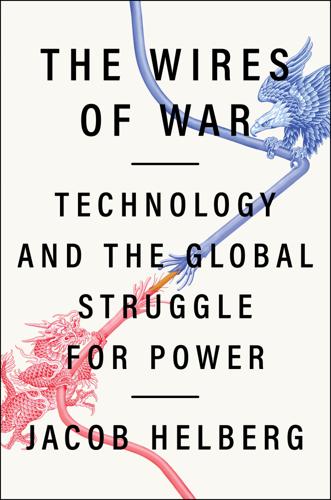
The Wires of War: Technology and the Global Struggle for Power
by
Jacob Helberg
Published 11 Oct 2021
All told, 5G could inject $12 trillion into the global economy by 2035 and add 22 million jobs just in the United States.120 With good reason, 5G has been hailed as “the central nervous system of the 21st-century economy.”121 Whoever presides over that central nervous system could have unprecedented control over virtually everything in our lives—who reads our emails and texts, how our homes operate, where our autonomous vehicles are going. Not to mention that properly transmitting 5G signals will require millions of antennas and cell relays—at least one per city block, by some estimates—exponentially increasing opportunities for surveillance. That’s where things really get scary. Because the undisputed leader in 5G technology isn’t America’s Qualcomm, Sweden’s Ericsson, or Finland’s Nokia. It’s China’s Huawei. * * * What gives Huawei such a formidable 5G advantage? For starters, Huawei designs and manufactures virtually every component itself.
…
Currently, the Federal Communications Commission auctions off chunks of U.S. airwaves. These range from low-frequency signals (which can carry limited data long distances) to high-frequency signals (which can transmit tons of data but are easily blocked by walls or trees). Yet the U.S. military owns—and barely utilizes—the coveted “mid-band” spectrum that would be ideal for 5G signals. While leasing this mid-band spectrum would cause free market absolutists heartburn, it would go a long way toward spurring an American 5G alternative. It’s also entirely in keeping with historic federal investments in infrastructure and technology. For this reason, leading Silicon Valley CEOs like Eric Schmidt have endorsed the effort.
…
The foundations for such a bloc are already apparent, whether through that prospective Japanese-Indian-Australian supply-chain partnership, ideas like the Aspen Institute’s proposal for a Tech 10,46 or UK prime minister Boris Johnson’s proposal to expand the G7 to a new D-10—a ten-nation democratic coalition that can collaboratively fund and create alternatives to Chinese 5G technology.47 In late November 2020, the E.U. proposed a Transatlantic Trade and Technology Council with the United States, to establish shared technology standards and coordinate issues like screening foreign investors.48 Components manufactured in these countries—whether drones or database servers—would be considered as secure as if they were produced in Boston or Virginia.

The Perfect Police State: An Undercover Odyssey Into China's Terrifying Surveillance Dystopia of the Future
by
Geoffrey Cain
Published 28 Jun 2021
Katie Collins, “Pentagon Bans Sale of Huawei, ZTE Phones on US Military Bases,” CNET, May 2, 2018, https://www.cnet.com/news/pentagon-reportedly-bans-sale-of-huawei-and-zte-phones-on-us-military-bases/. 13. Michael Slezak and Ariel Bogle, “Huawei Banned from 5G Mobile Infrastructure Rollout in Australia,” Australia Broadcasting Corporation, August 23, 2018, https://www.abc.net.au/news/2018-08-23/huawei-banned-from-providing-5g-mobile-technology-australia/10155438. 14. Tasneem Akolawala, “Huawei Says Shipped 100 Million Smartphones in 2018 Already, Aims to Cross 200 Million,” Gadgets 360, NDTV, July 19, 2018, https://gadgets.ndtv.com/mobiles/news/huawei-100-million-smartphone-sales-2018-1886358. 15.
…
Steve McCaskill, “US Wants to Help Ericsson, Nokia and Others Develop 5G Alternatives,” TechRadar, February 17, 2020, https://www.techradar.com/news/us-wants-to-help-ericsson-nokia-and-others-develop-5g-alternatives. 19. Reuters, “U.S. Allied Firms Testing Alternatives to Chinese 5G Technology: Esper,” February 15, 2020, https://www.reuters.com/article/us-germany-security-esper-5g/u-s-allied-firms-testing-alternatives-to-chinese-5g-technology-esper-idUSKBN2090A3. 20. Aimee Chanthadavong, “Huawei Australia Sees 5G Ban Start to Bite as Carrier Business Down 21% for 2019,” ZDNet, May 1, 2020, https://www.zdnet.com/article/huawei-australia-sees-5g-ban-start-to-bite-as-carrier-business-down-20-for-2019/. 21.

Digital Empires: The Global Battle to Regulate Technology
by
Anu Bradford
Published 25 Sep 2023
Part 744 (Supp. 2022). 22.Matt Henry & Matthew Carney, China and the US Are Locked in a Superpower Tech War to “Win the 21st Century,” ABC News, https://www.abc.net.au/news/2021-07-08/trump-facebook-twitter-china-us-superpower-tech-war/100273812 (July 8, 2021); Asa Fitch & Kate O’Keeffe, Qualcomm Lobbies U.S. to Sell Chips for Huawei 5G Phones, Wall St. J. (Aug. 8, 2020), https://www.wsj.com/articles/qualcomm-lobbies-u-s-to-sell-chips-for-huawei-5g-phones-11596888001?mod=tech_lead_pos7. 23.Supplement No. 4 to Part 744—Entity List, 15 C.F.R. Part 744 (Supp. 2022). 24.Export Administration Regulations: Amendments to General Prohibition Three (Foreign-Produced Direct Product Rule) and the Entity List, 15 C.F.R. pts. 730, 732, 736, 744. 25.Lauly Li, Cheng Ting-Fang, & Yifan Yu, How a Handful of US Companies Can Cripple Huawei’s Supply Chain, Nikkei Asia (Aug. 19, 2020), https://asia.nikkei.com/Spotlight/Huawei-crackdown/How-a-handful-of-US-companies-can-cripple-Huawei-s-supply-chain. 26.Kathrin Hille, Eleanor Olcott, & James Kynge, US–China Business: The Necessary Reinvention of Huawei, Fin.
…
Comm’n, Shaping Europe’s Digital Future 3 (2020), https://ec.europa.eu/info/sites/default/files/communication-shaping-europes-digital-future-feb2020_en_4.pdf. 164.Jeremy Shapiro, Introduction: Europe’s digital sovereignty, in Carla Hobbs (ed.), Europe’s Digital Sovereignty: From Rulemaker to Superpower in the Age of Us–China Rivalry, 6, 10 (2020). 165.Robbie Gramer, Trump Turning More Countries in Europe Against Huawei, Foreign Policy (Oct. 27, 2020), https://foreignpolicy.com/2020/10/27/trump-europe-huawei-china-us-competition-geopolitics-5g-slovakia/; see for Poland: Jill Colvin, US and Poland Sign Agreement to Cooperate on 5G Technology, AP News (Sep. 2, 2019), https://apnews.com/article/europe-donald-trump-ap-top-news-international-news-politics-9a90e16d903947709998dd7a2dde8733; see for Romania: Romania, US Sign Memorandum on 5G Technologies “In Line with Rule of Law Principles,” Romania Insider (Aug. 22, 2019), https://www.romania-insider.com/romania-us-5g-memorandum. 166.Natalia Drozdiak, EU’s Breton Says Time to Fix “Naïve” Approach to Chip Supply, Bloomberg (May 5, 2021), https://www.bloomberg.com/news/articles/2021-05-05/europe-looks-to-secure-chip-supply-after-naive-past-approach. 167.Inside the Future: Europe’s Plan to Thrive in the Global Microchip Race, Eur.
…
Today, the 5G market is a major battleground in the US and China’s broader fight for digital sovereignty. In the US, like elsewhere in the world, the 5G network forms a vital backbone to essential societal services and economic activities—ranging from electricity and transportation to banking and healthcare. As the world’s leading vendor of 5G technology, China’s Huawei has found itself in the crosshairs of the US–China tech war. The US government is concerned that any reliance on Huawei-built 5G networks in the US will expose data flowing through such networks to potential espionage by the Chinese government, given the company’s close ties to Beijing.
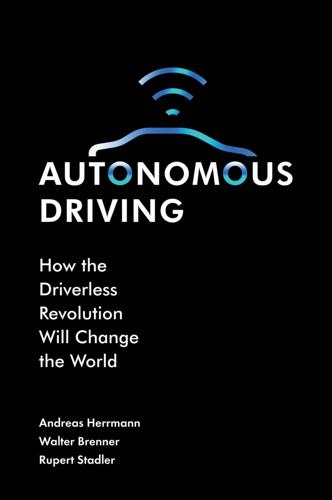
Autonomous Driving: How the Driverless Revolution Will Change the World
by
Andreas Herrmann
,
Walter Brenner
and
Rupert Stadler
Published 25 Mar 2018
With direct connectivity, which is likely to become standard, the vehicle has its own SIM card and therefore its own identity in the mobile-phone network. With indirect connections, there is a mobile device (e.g. smartphone) in the vehicle that is connected with the vehicle via cable or Bluetooth. Figure 12.2 shows the growth in the performance of mobile-phone networks and the expected boost from 5G technologies. GSM, UMTS, HSPA, HSPA+, LTE and LTE Advanced are technologies used for various applications. It is estimated that transmission rates with 5G networks will increase between 10- and 100-fold, i.e. they will soon approach 10 gigabits per second. The number of participants that can communicate at the same time should also rise, and at the same time, energy consumption is expected to fall.
…
In the mobile-phone networks available today, delay times of 50 to several hundred milliseconds are usual. Against this backdrop, key players (Ford, Jaguar, Land Rover, Volkswagen, Audi, BMW, Daimler, Ericsson, Huawei, Intel, Nokia, Qualcomm and many others) have formed the 5G Automotive Association, which aims to promote the standardisation of 5G technologies and accelerate their spread (see Boxes 12.1 and 12.2). Figure 12.2. Development of Mobile Communication Networks. Data transfer rate in MBit/s <10 GBit 5G <1 GBit <0.4 MBit <7.2 MBit 2G 3G 3G GSM UMTS HSPA 1996 2004 2006 <0.2 MBit Source: LTE.info. <150 MBit 4G 4G LTE Adv
…
Therefore, at least three service classes are defined for 5G: (1) Conventional broadband applications, also termed enhanced mobile broadband (eMBB), e.g. for video streaming and downloading map material. (2) Time-critical, reliable applications, e.g. for automated and autonomous driving. (3) Sensor applications with an extremely high number of devices and very low electricity consumption, e.g. smart metering. In Europe, some carmakers, telecommunications companies and network operators have already jointly formulated their requirements for 5G technology, which will successively flow into the standardisation committees. The 5G standardisation started in 2016 and is to be completed by 2019. The main challenge consists of creating a shared interface between the car platform and the 5G network. Another aspect is that a patent strategy must be agreed upon between the automotive and mobile-telephony industries.

Chokepoints: American Power in the Age of Economic Warfare
by
Edward Fishman
Published 25 Feb 2025
Tech Limits,” The Washington Post, September 2, 2023, www.washingtonpost.com/technology/2023/09/02/huawei-raimondo-phone-chip-sanctions; “China Secretly Transforms Huawei into Most Powerful Chip War Weapon,” Bloomberg, December 1, 2023, www.bloomberg.com/graphics/2023-china-huawei-semiconductor. GO TO NOTE REFERENCE IN TEXT “Extreme suppression by the U.S.”: Quoted in Che Pan, “Tech War: Huawei Surprises Again with Low-Key Presales of Top-of-the-Line Mate 60 Pro+ as US-Blacklisted Firm Stays Mum over ‘Breakthrough’ 5G Mobile Chip,” South China Morning Post, September 8, 2023, www.scmp.com/tech/big-tech/article/3233921/tech-war-huawei-surprises-again-low-key-presales-top-line-mate-60-pro-us-blacklisted-firm-stays-mum. GO TO NOTE REFERENCE IN TEXT It turned out the Chinese companies: Cagan Koc and Mackenzie Hawkins, “Huawei Chip Breakthrough Used Tech from Two US Gear Suppliers,” Bloomberg, March 7, 2024, www.bloomberg.com/news/articles/2024-03-08/huawei-chip-breakthrough-used-tech-from-two-us-gear-suppliers; Allen, “In Chip Race”; Qianer Liu, “Huawei Surprised the US.”
…
GO TO NOTE REFERENCE IN TEXT Johnson of “betrayal”: John T. Bennett, “White House Refuses to Deny Trump Accused Boris Johnson of ‘Betrayal’ in Angry Phone Call over Huawei Decision,” The Independent, February 24, 2020, www.independent.co.uk/news/world/americas/us-politics/trump-boris-johnson-huawei-5g-phone-call-white-house-a9355506.html. GO TO NOTE REFERENCE IN TEXT capped the amount of equipment: Arjun Kharpal, “Huawei Allowed Limited Access to UK’s 5G Networks as Britain Defies US Pressure,” CNBC, January 28, 2020, www.cnbc.com/2020/01/28/huawei-uk-chinese-firm-allowed-limited-access-to-uk-5g-network.html.
…
A few days after the Munich Security Conference, Ryan Ding, the president of Huawei’s carrier business, announced that the company had signed ninety-one commercial 5G contracts, including forty-seven in Europe alone. Ding boasted that Huawei remained “eighteen months ahead of our competitors in 5G technology.” With the wind at its back, Huawei went on the offensive. On February 26, Guo Ping, Huawei’s rotating chairman, spoke at the Mobile World Congress, a marquee trade show for the telecom industry, in Barcelona. His message was simple: Instead of talking a big game on security, the Americans should look in the mirror.

Don't Be Evil: How Big Tech Betrayed Its Founding Principles--And All of US
by
Rana Foroohar
Published 5 Nov 2019
While America was once the dominating force in the high-tech sector, over the past few decades of globalization and outsourcing, the landscape has shifted. China is now the world’s major supplier of telecommunications equipment. It has moved ahead in mobile apps and payment systems, and it even owns the highest number of patents necessary for the rollout of the new high-speed 5G mobile services that will be necessary to connect the Internet of things and create new growth opportunities for all sorts of businesses. China has also made great strides in artificial intelligence. While companies like Google are still ahead in terms of sheer know-how, far more money is flowing into China’s AI efforts; according to a report by the global strategy and research company 13D, roughly 48 percent of global investment in AI is currently going to China, versus 38 percent to the United States.
…
The real advantages of 5G are going to come from the way in which individual companies and industries exploit the potential gains from 5G—and it’s difficult to know where they will come from just yet. “Just as no one predicted that one of the major uses of 4G would be a new way of calling taxis, the most important uses for 5G technology are also difficult to predict before [they are] actually available,” says Dan Wang, an analyst for Gavekal Dragonomics. Go back even further, and consider how the industrial revolution developed: The big things came first, like electricity and the combustion engine. But they were followed by spates of innovative products and services, ranging from automobiles and domestic appliances to wind turbines.

Super Continent: The Logic of Eurasian Integration
by
Kent E. Calder
Published 28 Apr 2019
Huawei has focused single-mindedly in its business strategy on building transcontinental mobile telephony relations with Europe.47 Indeed, over 35 percent of its total sales in 2017 were in Europe, representing three-quarters of its international total, with a special concentration in East and Central Europe, where it outsells Apple.48 Huawei operates large research centers in Sweden and Russia, and an innovation center for supercomputing in Poland.49 In total, it has over 10,000 employees in Europe, including 1,570 across its eighteen R&D centers there, and plays a central role in the increasingly important “Digital Silk Road” across the continent.50 These European research ties helped make Huawei the second-largest filer of patent applications in the world during 2016.51 Since 2009 it has placed special emphasis in its European research on advanced 5G technology, where together with Qualcomm, Nokia, and Ericsson it is one of the world leaders.52 It also collaborates closely with the Europeans in setting telecommunications equipment standards, complicating the task of US majors through such trans-Eurasian collaboration.53 Alibaba, a third variety of national champion, was founded in 1999 by Jack Ma, a former English teacher with extraordinary vision and drive.54 From the start, it had significant foreign support, particularly through investment by Goldman Sachs and Softbank.55 The Chinese government indirectly supported it in its early struggle with eBay, which supported its payments system, while at times placing obstacles in the way of eBay’s alternative.
…
Other options, however, are easily and even preferably undertaken with allies, or in a G-7 context, with subsequent expansion to G-20. These could include: (a) Codification of international standards for high-quality infrastructure; (b) a coherent response to the digital dimensions of BRI, including intermodal logistics, 5G communications; and B2B e-commerce; (c) assistance to developing countries in developing analytical capabilities to objectively evaluate BRI projects; and (d) systematic research on emerging transnational supply chains, particularly across Eurasia, and their geo-economic implications. American response to the emerging Eurasian Super Continent needs to involve fundamental changes in US research capability and policy-making institutions back home.
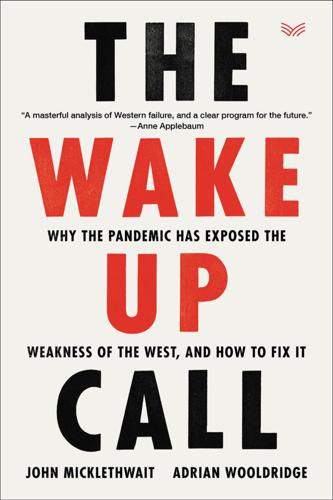
The Wake-Up Call: Why the Pandemic Has Exposed the Weakness of the West, and How to Fix It
by
John Micklethwait
and
Adrian Wooldridge
Published 1 Sep 2020
Only about a third of Americans trusted Donald Trump’s medical advice.22 One poll in late April showed that 62 percent of the French had no confidence in their government’s handling of the crisis, with commentators, on both the right and the left, comparing France’s response to Covid to the country’s “strange defeat” by Germany in 1940.23 At its worst, this distrust created conspiracy theories: that the virus had been deliberately manufactured, either by China or Big Pharma or indeed the United States; that it spread through 5G towers and masks; that it was a plot to kill off the old. Bill Gates was blamed, because long before Covid he had (correctly) warned about the danger of a global pandemic in a TED talk, and invested cash in trying to find a cure. This nonsense has consequences: people have burned down scores of 5G towers, including sometimes towers that served medical facilities. A third of Americans say that they won’t get themselves vaccinated if one is found. OVERLOADED—AND OVER?

Belt and Road: A Chinese World Order
by
Bruno Maçães
Published 1 Feb 2019
INDEX Abbasi, Zafar Mahmood, 126 Abe, Shinzo, 118, 137 Addis Ababa, Ethiopia, 68 Aden Gulf, 72 Adil, Umer, 60 Advancing the Development of the One Belt, One Road Leading Group, 39 aerospace, 88, 103 Afghanistan, 53, 107, 127, 128, 129, 135, 172 Africa, 3, 8, 25, 44, 124, 163 Djibouti, 4, 12, 46, 63, 67–8, 101, 117 Ethiopia, 46, 68, 154, 170, 186 manufacturing, 68, 77 Maritime Silk Road, 23, 26, 45, 62 oil, 64 Partnership for Quality Infrastructure, 138 piracy, 72 telecommunications, 101, 170–71 aging population, 75 Agricultural Bank of China, 48 agriculture, 11, 61, 76, 99–100, 103 Ahmedabad, Gujarat, 138 aircraft, 81, 91, 103 Akto, Xinjiang, 60 Aktogay, East Kazakhstan, 103 Alibaba, 44 Allison, Graham, 7–8 Alps, 189 aluminum, 17, 20, 88 Andalusia, Spain, 189 Andijan, Uzbekistan, 54 anti-dumping, 92, 113 Antwerp, Flanders, 65 Apollo program, 9 aquaculture, 71 Arabian Sea, 72, 106 Arctic, 4, 62, 66, 188 artificial intelligence (AI), 44, 75, 88 Arunachal Pradesh, India, 111 Asian Development Bank, 45, 137 Asian Financial Forum, 49 Asian Infrastructure Investment Bank, 48 Association of Southeast Asian Nations (ASEAN), 122 Astana International Exchange, 56 Astana, Kazakhstan, 25–6, 39, 56, 58 asteroids, 187 Athens, 8 Atlantic Ocean, 3, 115, 119, 138, 139 Atushi, Xinjiang, 60 Australia, 5, 12, 25, 119, 121, 122, 132–3, 135 automated vehicles, 88, 90, 186, 187, 190 automobile industry, 74, 81, 86, 90–91, 97, 104 Autor, David, 177 aviation, 81, 91, 103 Azad Jammu and Kashmir (AJK), 60 Azerbaijan, 186 Badakhshan, Afghanistan, 128 Baidu, 188 Baldwin, Richard, 74, 80 Balkans, 8, 12, 140 Balochistan, Pakistan, 60, 105 Gwadar port, 46, 59, 61–2, 63, 64, 99–100, 101, 105–7, 117 separatism and terrorism, 106, 127, 128 Baltic Sea, 51 Bangkok, Thailand, 65, 136–7 Bangladesh, 48, 53, 64, 109, 134, 136, 138, 150, 189 Bangladesh-China-India-Myanmar Economic Corridor (BCIM-EC), 52, 62 Bank of China, 48 banking, 46–51 bargaining theory, 152–3 Bay of Bengal, 22, 64, 72, 119 Beijing, China, 20, 28, 48, 126, 165 Beijing University, 183, 188 Belgium, 56, 65 Belgrade, Serbia, 143 Belt, see Silk Road Economic Belt Belt and Road Advancing the Development of the One Belt, One Road Leading Group, 39 backlash against, 12, 108, 121–4, 130–46, 155 bridges, 40, 54, 156, 173, 186 Buddhism, 112 cities, 11, 43, 44, 48, 149–52, 187–8 ‘community of shared destiny’, 26–9, 33, 36, 43, 45, 170 connectivity (wu tong), 42, 43, 52–3, 127, 158, 167 currency integration, 26 data, 44 debt, 12, 46, 47, 108, 109, 124, 126, 130, 132, 153–62 digital infrastructure, 43–4, 59, 86 e-commerce, 44, 59 economic corridors, 2, 11, 51–4, 55, 62 economic policy coordination, 28 energy, 11, 17, 19, 20–23, 40, 46, 48, 49, 52, 61, 64, 86, 92, 188 financing, 11, 36, 46–51, 54, 108–9, 124, 126, 130, 132, 138, 141, 153–64 Forum for International Cooperation (2017), 12, 108, 143, 152 impatience, 152–3 inauguration (2013), 11, 17, 23 industrial capacity cooperation, 85–8 industrial parks, 10, 43, 55, 61, 67, 99, 102 infrastructure, see infrastructure internal discontent, 163 international court, 28, 190 loans, 11, 36, 46–7, 54, 108–9, 124, 126, 130, 132, 138, 141, 153–62, 163 maps, 2–6, 24, 41, 64, 69 Maritime Silk Road, 24, 26, 28, 39, 41 market integration, 41 military bases, 12, 67, 71, 72, 101, 117, 126–7 overcapacity, 19 ports, see ports railways, 9–10, 11, 12, 18, 43, 46, 52, 53–4, 68, 86, 122, 130 roads, 9, 19, 40, 43, 52, 54 security, 127–9 Silk Road, 2, 9–10, 23–6, 45, 82, 138 Silk Road Economic Belt, 24, 25–6, 28, 39, 51–62, 83 success, definition of, 164, 174 telecommunications, 43–4, 52, 86, 101, 170–71 timeline, 10 TIR Convention, 55 transnational industrial policy, 81, 84 transport infrastructure, 9–10, 11, 18, 19, 25, 26, 40, 48, 49, 53–4, 83 urban development, 11, 43, 44, 48, 149–52 Vision and Actions document (2015), 40, 41, 45, 49, 50, 52, 62, 67, 78 Vision for Maritime Cooperation (2017), 62 Bering Strait, 66 Bharatiya Janata Party (BJP), 110 Bhat, Vinayak, 107 Bhutan, 107–8 big data, 44 Bishkek, Kyrgyzstan, 127 Blackwater, 128 blue economic passage, 62 Boao Forum for Asia (2015), 27, 32 Brahmaputra river, 136 Brazil, 174 Brewster, David, 63 BRIC (Brazil, Russia, India and China), 19, 174 bridges, 40, 54, 156, 173, 186 British Broadcasting Corporation (BBC), 188 Budapest, Hungary, 143 Buddhism, 111–12 Bush, George Walker, 169 California, United States, 64 Cambodia, 52, 54, 70, 129, 132, 155 Cameroon, 68, 187 Canada, 136 car industry, see automobile industry Caribbean, 25 Carr, Robert ‘Bob’, 122 Cartagena, Spain, 92 Caspian Sea, 186 Caucasus, 20, 129 CDMA (code-division multiple access), 89 cement, 17, 49–50, 83 Center for Strategic and International Studies, 19, 123 center of gravity, 115 Central African Republic, 186 Central Asia, 9, 20, 25, 51, 52, 82–3, 188 energy, 22, 106 Eurasian Economic Union (EEU), 57–9 India, trade with, 107 industrial capacity cooperation, 104 Islamism, 127 Russia, relations with, 57–9, 129, 133 steel industry, 82–3 terrorism, 127 textile industry, 101 transport infrastructure, 9, 54 Central Huijin Investment, 49, 50 Central Military Commission, 166 century of humiliation (1839–1949), 165, 186 Chabahar, Sistan-Baluchistan, 106–7 Chalay Thay Saath, 60 Chao Phraya River, 65 ChemChina, 48 Chengdu Economic Daily, 129 China Abbasi’s visit (2018), 126 Academy of Information and Communications Technology, 44 aging population, 75 Banking and Insurance Regulatory Commission, 50 Bishkek Embassy bombing (2016), 127 Boao Forum for Asia (2015), 27, 32 Buddhism, 111–12 century of humiliation (1839–1949), 165, 186 Doklam plateau dispute, 107–8, 113 energy, see energy EU-China summit (2015), 138 five-year plan (2016–20), 41 Food and Drug Administration, 114 Foreign Policy Center of the Central Party School, 7 Gants Mod crossing closure (2016), 36 General Navigation Office, 69 ‘Going Out’ strategy, 86 Guangxi Nonferrous Metals Group bankruptcy (2016), 16 Guiding Opinion on Promoting International Industrial Capacity (2015), 86 Guiding Opinion on Standardizing the Direction of Overseas Investment (2017), 86 incremental approach, 7 Indian Dilemma, 21 Institute of International Studies, 92 International Trust and Investment Corporation, 132 Investment Corporation, 48 keeping a low profile (tao guang yang hui), 15, 18, 32 labour shortages, 75 Macron’s visit (2018), 146–7 Made in China 2025 strategy, 85, 87, 90–92, 93 Malacca Dilemma, 21–2, 64, 131 Merchants, 68–9 middle-income trap, 75–7, 85 migrant workers, 75 military, 12, 13, 59, 67, 71, 72, 101, 117, 126–7 minimum wage, 75 Ministry of Commerce, 21, 40, 93 Ministry of Communications, 69 Ministry of Finance, 49 Ministry of Foreign Affairs, 40 Ministry of Industry and Information Technology, 19 Ministry of Transportation, 14 Modi–Xi summit (2018), 135 National Bureau of Statistics, 75 National Congress, 28, 29, 44, 165, 181 National Cybersecurity Work Conference (2018), 84 National Development and Reform Commission, 40, 98 National Health Commission, 114 Opium War, First (1839–1842), 165 overcapacity, 16, 19–20, 88 Overseas Chinese Affairs Office, 19 Overseas Investment Industrial Guiding Policy, 86 People’s Navigation Company, 69 Ports-Park-City model, 67 presidential term limits repeal (2018), 164, 174 real estate market, 16, 75 reform and opening up, 13–15, 73 renminbi, 22–3, 159 responsible stakeholder, 169 shipbuilding, 14, 17 soft power, 111, 170 Soviet Union, relations with, 13, 14, 15 State Administration of Foreign Exchange, 48 State Council, 19, 39, 40, 49, 66, 86 state-owned companies, 42, 153, 160–61, 189 steel industry, 16–17, 18, 20, 82–4, 86, 88 striving for achievement, 18 Swaraj’s visit (2018), 135 Taiwan, relations with, 14, 26, 142 technology transfers, 85–92, 97, 177–8 Thucydides’ trap, 8 Tianxia, 26–7, 29, 31–5, 78, 79, 192–3 TIR Convention, 55 Trump’s visit (2017), 124 ‘two heads abroad’ (liangtou zai haiwai), 17 United States, relations with, see Sino–US relations Working Conference on Neighborhood Policy (2013), 17–18 China Construction Bank, 48 China Development Bank, 16, 48, 49, 97, 98, 99, 103, 160 China Export & Credit Insurance Corp, 104 China Export-Import Bank, 46, 47, 48, 49, 103, 154 China Fantasy, The (Mann), 177 China Global Television Network, 188 China Nonferrous Metals Industry Group, 103 China Three Gorges Corp, 48 China-Indian Ocean-Africa-Mediterranean Sea Blue Economic Passage, 62 China-Indochina Peninsula Economic Corridor, 51, 52, 54, 62 China-Oceania-South Pacific, 62 China-Pakistan Economic Corridor (CPEC), 52, 59, 60, 62, 105–7, 108 Chinese Communist Party Advancing the Development of the One Belt, One Road Leading Group, 39 and Australia, 133 Constitution, 41, 164 founding of (1921), 165 National Congress, 18th (2012), 28 National Congress, 19th (2017), 29, 44, 165, 181 and New Zealand, 132 Politburo, 39, 40, 165 reform and opening up, 13–15 and steel industry, 16 Third Plenum of the 18th Party Central Committee (2013), 39 Chongyang Institute for Financial Studies, 106 Christianity, 128 Churchill, Winston, 183 cities, 11, 43, 44, 48, 149–52, 187–8 climate change, 4, 66, 85, 171 Clinton, William ‘Bill’, 177 cloud computing, 44 CloudWalk Technology, 44 Club Med, 189 CNN, 188 cobalt, 81, 104 Cold War, 2, 14, 21–2, 36, 40, 125, 171 Colombo, Sri Lanka, 156, 162 colonialism, 120, 162 ‘community of shared destiny’, 26–9, 33, 36, 43, 45, 135, 170 Confucianism, 31, 34 Congo, Democratic Republic of, 81, 104 connectivity, 42, 43, 52–3, 109, 122, 127, 146, 158, 167 Connectivity Platform, 139 construction, 18, 75, 86, 98 convergence, 4, 14, 166, 167, 169, 174, 177 copper, 103, 104 corridors, see economic corridors corruption, 133, 155–6, 158, 187 cosmopolitan neighborhoods, 4 Country Garden, 151 Cowboys and Indians, 188 cultural exchanges, 42, 43, 56–7 currency, 22–3, 26, 159–60 customs cooperation, 55, 57, 59, 63 Cyprus, 140 Dalai Lama, 36, 112 Dalian, Liaoning, 55, 93 Daming Palace, Xi’an, 147 Dangal, 111 data, 44 Davidson, Phillip, 125–6 Davos, Switzerland, 168 Dawn of Eurasia, The (Maçães), 185, 191 Dawood, Abdul Razak, 158 debt, 12, 16, 46, 47, 108, 109, 124, 126, 130, 132, 153–62 democracy, 125, 133, 166, 171, 172, 174, 175, 176, 181–3 Democratic Republic of Congo, 81, 104 Deng Xiaoping, 13–15, 18, 31, 32, 69, 73, 183 Diaoyu Islands, 187 digital infrastructure, 43–4 division of labor, 53, 78, 79, 80 Djibouti, 4, 12, 46, 63, 67–8, 101, 117, 186 Doklam plateau, 107–8, 113 Doraleh, Djibouti, 63, 67–8 DP World, 68 dry ports, 57 Dubai, UAE, 62, 68, 160 Dudher Zinc project, 127 Duterte, Rodrigo, 156 DVD (digital versatile disc), 89 e-commerce, 44, 59 East China Sea, 118 economic corridors, 2, 11, 51–4, 55 economic nationalism, 102 economic policy coordination, 28 Economist, The, 190 Egypt, 101 electric cars, 81, 104 electricity, 40, 46, 49, 52, 61, 98, 156, 188 end of history, 36 energy, 4, 11, 17, 19, 20–23, 48, 49, 82, 86, 92, 188 electricity, 40, 46, 49, 52, 61, 98, 156, 188 gas, 21, 22, 40, 52, 64, 72, 106 hydropower, 48 oil, 21, 22, 23, 40, 52, 64, 72, 106 renewable, 21, 187, 188 English language, 111, 188 Enhanced Mobile Broadband coding scheme, 89 Enlightenment, 193 environmental sustainability, 75 Erenhot, Inner Mongolia, 55 Ethiopia, 46, 68, 154, 170, 186 Eurasia, 1–5, 11, 20, 26, 45, 52, 57, 63, 120, 121, 138 Eurasian Economic Union (EEU), 57–9 Eurasian Resources Group, 103 European Commission, 143, 145 European empires, 120–21 European Union (EU), 5, 29, 57, 58, 138–47, 159, 176, 179 and Belt and Road, 10, 12, 30, 138–47 Connecting Europe and Asia strategy (2018), 145–6 and Djibouti, 67 economic policy coordination, 28 5G mobile networks, 43 immigration, 187 steel industry, 17 tariffs, 83 technology transfers, 87–8, 178 transnational framework, 81 Turkey, relations with, 4 Export-Import Bank of China, 46, 47, 48, 49, 103, 154 exports, 15, 17, 19, 79 Facebook, 188 facial recognition, 44, 190 fashion industry, 101 fate, 34 Fergana Valley, 54 fertilizers, 19 fibre-optic connectivity, 101 fifth generation (5G) mobile networks, 43–4, 89 finance, 11, 36, 46–51, 54, 126, 138, 141, 153–64 Financial Times, 10, 63, 143, 154, 157, 158, 159 five-year plan (2016–20), 41 Folding Beijing (Hao), 150 food imports, 76 foreign direct investment, 46, 144–6 foreign exchange, 16, 94, 153 Forest City, Johor, 149–51, 155 France, 11, 96, 129, 141, 144, 146–7, 189 free and open order, 125 free-trade zones, 11, 42, 55–6, 71 freedoms of speech, 172, 189 French Foreign Legion, 129 French, Howard, 13 Frontier Services Group, 128–9 Fu Chen, 129 Fu Ying, 140 Fukuyama, Francis, 184–5 Gabon, 96 Gabriel, Sigmar, 142 Gang of Four, 14 Gants Mod crossing closure (2016), 36 gas, 21, 22, 40, 52, 64, 72, 106 General Navigation Office, 69 generic drugs, 114 Genghis Khan, 2, 25 Georgia, 58 Germany, 11, 65, 80, 87–8, 90, 100, 141–2, 144, 189 ghost ships, 186 Gibraltar, 92 Gilgit-Baltistan, Pakistan, 54, 60, 108 Gland Pharma, 113 glass, 17, 83 Global Energy Interconnection, 188 global financial crisis (2008), 16–17, 85, 161, 178 Global Infrastructure Center, 190 Global Times, 67, 109, 131 global value chain revolution, 74 global warming, 4, 66, 85 globalization, 19, 28, 66, 78, 102, 124, 144, 168, 174, 192 ‘Going Out’ strategy, 86 good governance, 183–4 Google, 152, 188 Goubet, Djibouti, 67 government procurement, 12, 59 Grand Palace, Bangkok, 65 Grand Trunk Road, 53 Greece, 30, 31, 65, 140, 141, 142 GSM (Global System for Mobile communications), 89 Guangdong, China, 28, 75, 151 Guangxi Beibu Gulf International Port Group, 67 Guangxi Nonferrous Metals Group, 16 Guiding Opinion on Promoting International Industrial Capacity (2015), 86 Guiding Opinion on Standardizing the Direction of Overseas Investment (2017), 86 Guo Chu, 33 Gwadar, Balochistan, 46, 59, 61–2, 63, 64, 99–100, 101, 105–7, 117 Hainan, China, 71 Hambantota, Sri Lanka, 46–7, 63, 64, 68, 117, 162 Hamburg, Germany, 65 Hamilton, Clive, 133 Han Empire (206 BC–220 AD), 25 Hao Jingfang, 150 ‘harmonious world’, 33, 36 Havelian, Khyber Pakhtunkhwa, 54 He Yafei, 19, 168 heavy industry, 75, 82 Hebei, China, 83 Heilongjiang, China, 55 Hesteel, 83 high-speed railways, 18, 53–4, 83, 89, 98, 122, 130, 137, 138, 143, 186–7 highways, see roads Hillman, Jonathan, 8 Hobbes, Thomas, 27 Holslag, Jonathan, 189 Hong Kong, 49, 103 Hongshi Holding Group, 49 Horgos, Xinjiang, 55, 55–6, 57 Horn of Africa, 3 Hu Huaibang, 49, 97 Hu Jintao, 21, 33, 70 Hu Xiaolian, 154 Huang Libin, 19 Huangyan Island, 187 Huawei, 89–90, 101, 171 Hub, Balochistan, 127 hukou (household registration), 76 human rights, 141–2, 170, 171, 189 Hun Sen, 155 Hungary, 30, 140, 141, 142, 143, 144 Huntington, Samuel, 184 Hussain, Chaudhry Fawad, 157 hydropower, 48 Ibrahim Ismail, Sultan of Johor, 151 immigration, 187 impatience, 152–3 imports, 17, 19, 22, 79–84 India and the Indian Ocean (Panikkar), 118 India, 3, 5, 64, 105–25, 134–6, 174, 179 Bangladesh Liberation War (1971), 109 and Belt and Road, 11, 12, 52, 72, 105–15, 130, 133 Belt and Road Forum for International Cooperation (2017), 12, 108 British Raj (1858–1947), 107 Buddhism, 111–12 cosmopolitan neighborhoods, 4 cultural mission to China (1952), 113 Doklam plateau dispute, 107–8, 113 economic autarchy, 110, 117 free and open order, 125 Grand Trunk Road, 53 imports, 113–14 and Indian Ocean, 3, 116–19 Indo-Pacific, 116–23, 125 Japan, relations with, 118 Kashmir dispute, 108–9, 117 Malabar naval exercises (2018), 135 and maritime hegemony, 72 migrant workers, 150 military bases, 3, 131 Modi–Xi summit (2018), 135 Mumbai-Ahmedabad high-speed railway, 138 nuclear tests (1998), 109 Pakistan, relations with, 105–7, 108–9, 117, 134 pharmaceuticals, 113, 114 Quadrilateral Security Dialogue, 121–2 Research and Analysis Wing (R&AW), 105–6 and Sabang Island, 131 Siliguri Corridor, 107–8 Southeast Asia, 113, 117–18 Swaraj’s visit to China (2018), 135 Tibet, relations with, 111–12, 117, 136 United States, relations with, 119, 121–2, 134, 135 Indian Dilemma, 21 Indian Ocean, 3, 8, 9, 26, 51, 62, 63, 66, 68, 71–2, 116–19 Indo-Pacific, 116–23, 125, 126 and Japan, 4 Kra Isthmus canal proposal, 65, 186 meticulous selection, 72 Myanmar oil and gas pipeline, 64, 72 oil, 21, 64 and Pakistan, 59, 61, 64 individualism, 27, 189 Indo-Pacific, 116–23, 125, 126 Indo-Pacific Business Forum, 122 Indo-Pacific Command, US, 126 Indochina, 51, 52, 54, 62 Indonesia, 2, 5, 18, 26, 39, 48, 83, 117, 131 Industrial and Commercial Bank of China, 48, 49, 103 industrial capacity cooperation, 85–8, 98, 102–4 industrial internet, 44 industrial parks, 10, 43, 55, 61, 67, 99, 102 Industrial Revolution, 84 information technology, 43–4, 74, 81, 86, 90, 94, 111, 170–71, 190 infrastructure, 3, 23, 26, 30, 40–45, 48, 50, 55, 58, 63, 86, 88, 124, 139, 141, 162, 167, 186 Afghanistan, 135 communications, 81, 118 digital, 43–4 European Union, 10, 141, 145 India, 64, 118, 135 Japan, 4, 136–8 Maritime Silk Road, 66, 67 Mediterranean, 65 Pakistan, 54, 62, 99, 105 Quadrilateral Security Dialogue, 121–2 Southeast Asia, 18–19, 70, 117, 130, 132 steel industry, 18 transportation, see transportation value chains, 96 Xinjiang, 20, 54 Inner Mongolia, China, 55 innovation, 76 Institute for International Finance, 153 intellectual property, 59, 88–9, 91, 97, 180, 190 international courts, 28, 190 international industrial capacity cooperation, 85–8, 98, 102–4 International Monetary Fund (IMF), 15, 156–7, 158–9, 172 Internet, 43–4, 86, 170–71 internet of things, 90, 94 Iran, 4, 22, 105–6 Iraq, 24 Irkeshtam, Xinjiang, 55 iron, 17 Islamabad, Pakistan, 60, 99, 101, 127, 157 Islamic State, 128 Islamism, 127–9 Istanbul, Turkey, 4, 24, 65 Italy, 48, 65, 140, 189 Izumi, Hiroto, 137 Jadhav, Kulbhushan, 105–6 Jakarta, Indonesia, 2, 5, 26, 39 Japan, 1, 5, 22, 123, 133, 136–8, 145, 165, 166, 169, 189 Buddhism, 111 Cold War, 21–2 India, relations with, 118 Indian Ocean, 4 infrastructure development, 4, 136–8 Quadrilateral Security Dialogue, 121–2 Second World War (1937–45), 119, 165 Javaid, Nadeem, 46 Jiang Qing, 14 Jiang Shigong, 183–4 Jiang Zemin, 15 Jiangsu Delong, 83 Jin Qi, 98 Jinnah Town, Quetta, 128 Johor, Malaysia, 149–51 Joint Statement on Cooperation on EEU and Silk Road Projects (2015), 57–8 joint ventures, 97 Journey to the West, 186, 188 Juncker, Jean-Claude, 138 Kaeser, Joe 170 Karachi, Sindh, 59, 100, 105, 106, 127 Karakoram Highway, 54, 60, 64 Kashgar, Xinjiang, 54, 59, 60, 64, 101 Kashmir, 60, 108–9, 117 Katanga, Democratic Republic of Congo, 104 Kaz Minerals 103 Kazakhstan, 8, 55–9, 129, 189 Astana International Exchange, 56 China–EEU free-trade agreement signing (2018), 58 and Eurasian Economic Union, 57 gateway to Europe, 56 Horgos International Cooperation Center, 55–6 industrial capacity cooperation, 103–4 railways, 54 Xi’s speech (2013), 23, 25–6, 39 Kazakhstan Aluminum, 103 keeping a low profile (tao guang yang hui), 15, 18, 32 Kenya, 101, 138, 171 Khan, Imran, 157–8 Khawar, Hasaan, 53 Khunjerab Pass, 101 Khyber Pakhtunkhwa, Pakistan, 54, 60, 100 Kizilsu Kirghiz, Xinjiang, 60 knowledge, 74, 76, 87 Kolkata, West Bengal, 64 Kortunov, Andrey, 135 kowtow, 35 Kra Isthmus, Thailand, 65, 186 Kuala Linggi Port, Malacca, 63 Kuala Lumpur, Malaysia, 130 Kuantan, Pahang, 63, 67 Kudaibergen, Dimash, 57 Kunming, Yunnan, 188 Kyaukpyu, Rakhine, 63, 64, 132, 154 Kyrgyzstan, 53, 54, 55, 103, 127 labor costs, 74, 83, 85, 99 labor shortages, 75 Lagarde, Christine, 158–9 Lahore, Punjab, 100, 157 Laos, 50, 52, 54, 129, 132 Latin America, 25, 187, 188 Leifeld Metal Spinning AG, 88 Lenin, Vladimir, 6, 78 Lenovo, 89–90 Li Hongzhang, 69 Li Keqiang, 44 Li Ruogu, 47 Liaoning, China, 55 liberal values, 123, 125, 133, 170 liberal world order, 141, 144, 167–86, 190, 192 Lighthizer, Robert, 91 lignite, 61 liquefied natural gas (LNG), 48, 66 Lisbon, Portugal, 2, 5 lithium-ion batteries, 81 Liu Chuanzhi, 89–90 Liu He, 92 loans, 11, 36, 46–7, 54, 108–9, 124, 126, 130, 132, 138, 141, 153–63, 190 London, England, 65, 160 Lord of the Rings, The (Tolkien), 1 Lou Jiwei, 76 Luo Jianbo, 7 Machiavelli, Niccolò, 31–4 machinery, 81, 90, 98, 156 Mackinder, Halford, 120 Macron, Emmanuel, 146–7 Made in China 2025 strategy, 85, 87, 90–92, 93 Mahan, Alfred, 120 Mahathir Mohamad, 130–31, 151, 155 Malabar naval exercises (2018), 135 Malacca, Malaysia, 3, 63 Malacca Strait, 21–2, 64, 65, 72, 117, 131 Malay Mail, 155 Malaysia, 3, 70, 117, 130–31, 154 debt, 154 Forest City, 149–51, 155 high-speed railways, 54, 130 Mahathir government (2018–), 130–31, 151, 155 1Malaysia Development Berhad scandal (2015–), 155 ports, 63, 67 Maldives, 134, 155 Mali, 129 Malik, Ashok, 109 Malta, 140 Mandarin, 107, 149, 188 Manila, Philippines, 122 Mann, James, 177 manufacturing, 11, 19, 68, 77, 85, 99 outsourcing, 68, 99 value chains, 3, 43, 64, 73–4, 79–82, 84–5, 94–104, 141 Manzhouli, Inner Mongolia, 55 Mao Zedong, 13–14, 31, 183 maps, 2–6, 24, 41, 64, 69 Maritime Silk Road, 24, 26, 28, 39, 41, 53, 62–72, 117 market integration, 41 Mars, 187 Marshall Plan, 40 Marx, Karl, 6 Marxism, 78 Massachusetts Institute of Technology (MIT), 177 Matarbari port, Bangladesh, 138 matchmaking services, 11 Mattis, James, 124 McMahon Line, 111 Mediterranean Sea, 4, 51, 62, 65, 119 Mei Xinyu, 21 Mekong Delta, 8 mergers and acquisitions, 42 Merkel, Angela, 88, 141, 144 meticulous selection, 72 Middle East, 4, 6, 22, 64, 120, 129, 163, 171 middle-income trap, 75–7, 85 migrant workers, 75 Milanovic, Branko, 173 military, 3, 12, 67, 71, 72, 101, 117, 126–7 Ming Empire (1368–1644), 163 Ming Hao, 30 minimum wage, 75 Ministry of Commerce, 21, 40, 93 Ministry of Communications, 69 Ministry of Finance, 49 Ministry of Foreign Affairs, 40 Ministry of Industry and Information Technology, 19 Ministry of Transportation, 14 Minmetals International Trust Co, 16 mobile payments, 193 Modi, Narendra, 106, 135–6 Mohan, Raja, 3, 121 Mombasa, Kenya, 138 Mongol Empire (1206–1368), 2, 25 Mongolia, 8, 36, 52, 55, 111 Moon, 187 Moraes, Frank, 112–13 Moscow, Russia, 4 Most Favored Nation status, 15 Mozambique, 138 multinationals, 74, 88–9 multipolar world system, 179 Mumbai, Maharashtra, 4, 105, 138 Myanmar, 52, 54, 63, 64, 72, 129, 132, 138, 154 Nacala, Nampula, 138 narcotics trade, 127 Nathan, Andrew, 159 National Aeronautics and Space Administration (NASA), 9 National Bureau of Statistics, 75 National Congress 18th (2012), 28 19th (2017), 29 National Cybersecurity Work Conference (2018), 84 National Development and Reform Commission, 40, 98 National Health Commission, 114 National League for Democracy, Myanmar, 132 National Museum of China, Beijing, 165, 166 National Party of New Zealand, 132 National People’s Congress, 44 National Rescue Party of Cambodia, 155 Nazarbayev University, 25–6 Nehru, Jawaharlal, 113 Nepal, 134, 135, 150 Netherlands, 56, 65 New Zealand, 132–3 Nigeria, 68 Ning Jizhe, 137 Nordin, Astrid, 42 Northern Sea Route, 66 Northwest Passage, 66 NPK fertilizer, 99 nuclear power/weapons, 21, 83, 88, 109, 166, 187 oil, 21, 22, 23, 40, 52, 64, 72, 106 1Malaysia Development Berhad scandal (2015–), 155 One China policy, 142 Open Times, 183 Opium War, First (1839–1842), 165 Organisation for Economic Co-operation and Development (OECD), 79 Osh, Kyrgyzstan, 54 overcapacity, 16, 19–20, 88 Overseas Chinese Affairs Office, 19 Overseas Investment Industrial Guiding Policy, 86 Pacific Command, US, 125–6 Pacific Journal, 71 Pacific Ocean, 3, 5, 9, 26, 45, 62, 116, 117, 125–6, 139 Indo-Pacific, 116–23, 125, 126 Pakistan, 12, 20, 46, 48, 52, 59–62, 64, 98–102, 105, 126–9, 133–4, 155, 156–8 Abbasi’s Beijing visit (2018), 126 agriculture, 99–100 balance of payments crisis, 156–8 Economic Corridor, 52, 59, 60, 62, 105, 108, 156–8 electricity production, 61 fibre-optic connectivity, 101 gateway to the Indian Ocean, 59 Grand Trunk Road, 53 Gwadar port, 46, 59, 61–2, 63, 64, 99–100, 101, 105–7, 117 hydropower, 48 IMF loans, 156–7 India, relations with, 105–7, 108–9, 117, 134 investment, 48 Jadhav arrest (2016), 105–6 Karakoram Highway, 54, 60, 64 Kashmir dispute, 108–9 loans, 46, 54, 156–8 manufacturing, 99 safe city project, 101 Tehreek-e-Insaf, 157–8 television, 101 terrorism, 106, 127–8, 135 textiles, 100 Thar desert, 61 value chains, 98–102 Pakistan-East Africa Cable Express, 101 Pandjaitan, Luhut, 131 Panikkar, Kavalam Madhava, 118 Pantucci, Raffaello, 134 Partnership for Quality Infrastructure, 137–8 patents, 88–9, 190 Pavlodar, Kazakhstan, 103 Peak Pegasus, 93 Pearl River Delta, China, 152 Peking University, 183, 188 Penang, Malaysia, 63 People’s Daily, 57 People’s Liberation Army (PLA), 32, 169 People’s Navigation Company, 69 Pericles, 8 Persian Gulf, 51, 64, 72 Peshawar, Khyber Pakhtunkhwa, 100 petcoke, 103 Petrochina, 103 pharmaceuticals, 113, 114 Phaya Thai Station, Bangkok, 137 Philippines, 19, 70, 117, 122, 156 philosophy, 40, 183 Phnom Penh, Cambodia, 70 phosphate, 19 piracy, 72 Piraeus, Greece, 65 Pirelli, 48 Plato, 150 Poland, 58, 140 Polar Silk Road, 66 Politburo, 39, 40, 165 political correctness, 182 Polo, Marco, 2, 10 Polonnaruwa, Sri Lanka, 156 Pompeo, Michael, 122–3, 157 ports, 9, 10, 12, 19, 36, 40, 46–7, 57, 63–5, 67–9, 96 Chabahar, Iran, 106–7 Doraleh, Djibouti, 63, 67–8 Gwadar, Pakistan, 46, 59, 61–2, 63, 64, 99–100, 101, 117 Hambantota, Sri Lanka, 46–7, 63, 64, 68, 117, 162 Kuala Linggi, Malaysia, 63 Kuantan, Malaysia, 63, 67 Kyaukpyu, Myanmar, 63, 64, 132, 154 Mediterranean, 65 Mombasa, Kenya, 138 Nacala, Mozambique, 138 Penang, Malaysia, 63 Ports-Park-City model, 67 Portugal, 2, 3, 5, 140, 163 power, see energy Prince, Erik, 128–9 property bubbles, 75 protectionism, 102, 114 public procurement, 12, 59 Punjab, Pakistan, 60, 99, 100, 157 Putin, Vladimir, 3, 57 Pyrenees, 189 Qing Empire (1636–1912), 107, 178 Quadrilateral Security Dialogue, 121–2 Qualcomm, 89 Quetta, Balochistan, 128 Raikot, Gilgit-Baltistan, 54 railways, 9–10, 11, 12, 18, 43, 52, 53–4, 57, 68, 83, 86, 89, 98, 100, 135 Addis Ababa–Djibouti, 46, 68 Bangkok–Chiang Mai, 137 Belgrade–Budapest, 143 Djibouti–Yaoundé, 68, 186–7 Islamabad–Gwadar, 60 Kashgar–Andijan, 54 Kuala Lumpur–Singapore, 130 Lahore overhead, 157 Mumbai–Ahmedabad, 138 United States, 122 Yunnan–Southeast Asia, 54 Rawat, Bipin, 108 RB Eden, 92 real estate market, 16, 75 reciprocity, 178–80 Red Sea, 72 reform and opening up, 13–15, 73 Ren Zhengfei, 90 Renaissance, 7 renewable energy, 21, 187, 188 Renmin University, 106 renminbi, 22–3, 159 Rennie, David, 190 Republic (Plato), 150 Research and Analysis Wing (R&AW), 105–6 responsible stakeholder, 169 Rio Tinto, 36 Road Towards Renewal exhibition (2012), 165 Road, see Maritime Silk Road roads, 9, 19, 40, 43, 52, 54, 55, 57, 67, 107–8 robotics, 75, 88, 90 Rogin, Josh, 122 Rolland, Nadège, 188, 190 Ross, Wilbur, 92 Rotterdam, South Holland, 65 Ruan Zongze, 92 rule of law, 28, 109, 111, 183–4 Russia, 5, 51, 52, 55, 133, 134, 139, 174, 175–6, 180, 181 and Central Asia, 57–9, 129, 133 energy, 22, 23 Eurasian Economic Union, 57–9 Eurasianism, 3–4 Joint Statement on Cooperation on EEU and Silk Road Projects (2015), 57–8 Pacific Fleet, 118 and renminbi internationalization, 23 Soviet era, see under Soviet Union steel industry, 82 Ukraine crisis (2013–), 176 Western values, rejection of, 175, 180, 181 Yamal LNG project, 48, 66 Sabang, Indonesia, 131 safe cities, 101, 171 salt, 67, 71 San Francisco, California, 151–2 Saravan, Sistan-Baluchistan, 105 Sargsyan, Tigran, 59 Sassanian Empire (224–651), 4 satellites, 187 second unbundling, 74 Second World War (1939–45), 165 self-driving vehicles, 88, 90, 186, 187, 190 Serbia, 83, 143 Set Aung, U, 132 Shandong University, 163 Shanghai, China, 2, 20, 92 Shanghai Cooperation Organization, 136 Shanghai Fosun Pharmaceutical, 113 Shanghai Pudong Development Bank, 16 Shanghai Stock Exchange, 50, 56, 103 Sharif, Nawaz, 133–4 sharp power, 170 sheet glass, 17, 83 Shenwan Hongyuan Securities, 16 Shenzhen, Guangdong, 28, 151 shipbuilding, 14, 17, 81, 186 Sichuan, China, 149 Siemens, 170 silicon dioxide, 103 Siliguri Corridor, India, 107–8 Silk Road, 2, 9–10, 23–6, 45, 53, 82, 138 Silk Road Economic Belt, 24, 25–6, 28, 39, 51–62, 83 Silk Road Fund, 48, 56, 98 silk, 23–4 Sindh, Pakistan, 59, 60, 99, 100, 101, 105, 106, 127 Singapore, 54, 77, 92, 119, 130, 150, 151, 160 Sino–Myanmar oil and gas pipeline, 64, 72 Sino–US relations, 116, 119, 121–6, 136, 179–80 and Belt and Road, 5–6, 11, 12, 15, 72, 121–4, 130, 136, 168 and Cold War, 14 and foreign exchange reserves, 16 and Indo-Pacific, 116, 119, 121–3, 125, 126 and Kra Isthmus canal proposal, 65 and Malacca Dilemma, 21–2, 64 and maritime hegemony, 70, 72 and Most Favored Nation status, 15 and Pakistan, 157 and reciprocity, 179–80 and reform and opening up, 14–15 and renminbi internationalization, 23 and South China Sea, 70 and steel, 17 Strategic and Economic Dialogue, 39 and Taiwan, 14 and tariffs, 83, 90–94 and technology transfers, 90–92, 178 Thucydides’ trap, 8 and trade deficit, 90, 92 trade war, 92–4, 173 war, potential for, 5, 8, 13, 14 Yangtze River patrols (1854–1937), 165 and ZTE, 94 Sirisena, Maithripala, 155–6 Sistan-Baluchistan, Iran, 105, 106–7 SLJ900/32, 54 Small, Andrew, 59, 158 smart cities, 44, 151–2 Smederevo, Serbia, 83 soft power, 111, 170 solar power, 187, 188 Somalia, 72 Somersault Cloud, 186 sorghum, 92 South Africa, 101 South America, 25, 187, 188 South China Sea, 21, 62, 65, 69–71, 118, 142, 170, 179 South Korea, 1, 77, 96, 97, 128 South Sudan, 186 Southeast Asia, 6, 8, 12, 18, 100, 131–2, 189 Buddhism, 111 China-Indochina Peninsula Economic Corridor, 51, 52, 54, 62 Indo–Chinese relations, 113, 117–18 Kra Isthmus canal proposal, 65, 186 Maritime Silk Road, 26 phosphate market, 19 South China Sea dispute, 21, 69–71, 142, 170, 179 textile industry, 100 Soviet Union, 1, 13, 14, 15, 21–2, 57, 104 soybeans, 90, 93 space travel, 187 Spain, 92, 140, 189 Sparta, 8 Sri Lanka, 12, 46–7, 63, 64, 68, 89, 117, 134, 155–6, 162 Hambantota port, 46–7, 63, 64, 68, 117, 162 Sirisena’s grant announcement (2018), 156 standards, 89–90 State Administration of Foreign Exchange, 48 State Council, 19, 39, 40, 49, 66, 86 state-owned companies, 42, 153, 160–61, 189 steamships, 69 steel industry, 16–17, 18, 20, 67, 82–4, 86, 88 striving for achievement, 18 Stuenkel, Oliver, 167 subprime mortgage crisis (2007–10), 153 Suez Canal, 3, 66, 68, 72, 119 Suifenhe Port, Heilongjiang, 55 Sukkur, Sindh, 99, 101 Sulawesi, Indonesia, 83 Sumatra, Indonesia, 3 Sun Pharmaceuticals, 114 Sun Wenguang, 163 Surkov, Vladislav, 3–4 surveillance, 44, 101, 171, 187, 190 Suvarnabhumi Airport, Bangkok, 137 Swamy, Subramanian, 110 Swaraj, Sushma, 135 Switzerland, 160, 168 Syria, 24 Tadjoura gulf, Djibouti, 67 taikonauts, 187 Taiwan, 14, 142 Tajikistan, 48, 127 Tanjung Pelepas Johor, 150 Tanzania, 138 tao guang yang hui, 15, 18, 32 Taoism, 11, 51 tariffs, 17, 56, 58, 79, 82, 83, 179 Tawang Monastery, Arunachal Pradesh, 111 tax holidays, 61 TBM Slurry, 54 technology transfers, 85–92, 97, 118, 177–8 Tehreek-e-Insaf, 157–8 telecommunications, 43–4, 52, 86, 89–90, 98, 101, 170–71 television, 101 terrorism, 106, 127–9, 135, 171 Texas, United States, 92 textiles, 86, 100–101 Thailand, 18, 54, 65, 83, 89, 129, 132, 136–7, 186 Thakot, Khyber Pakhtunkhwa, 54 Thar desert, 61 Thein Sein, 132 Thilawa special economic zone, Myanmar, 138 throw-money diplomacy, 163 Thucydides’ trap, 8 Tianjin, China, 129 Tianxia, 26–7, 29, 31–5, 78, 79, 192–3 Tibet, 36, 111–12, 117, 136, 189 Tibetan Academy of Buddhism, 112 Tillerson, Rex, 11, 123, 125 timber, 96 Times of India, 109 Tinbergen, Jan, 20 TIR (Transports Internationaux Routiers) Convention, 55 titanium dioxide, 103 Tokyo, Japan, 137 Tolkien, John Ronald Reuel, 1 tourism, 10, 11, 61, 71 trade wars, 92–4, 113–14, 173 trains, 9–10, 11, 12, 18, 43, 46 Trans-Siberian railway, 10 Transatlantic trade, 3, 139 transnational industrial policy, 81, 84 Transpacific trade, 3, 139 transparency, 12, 28, 109, 143, 144, 146, 157, 173, 193 Transpolar Route, 66 transportation, 9–10, 19, 25–6, 48–9, 52–4, 63–4, 81–3, 99, 103, 104, 118, 143, 162, 186 maritime, 63 railways, see railways roads, 9, 19, 40, 43, 52, 54, 55, 57, 67, 107–8 tributary system, 34–5 Trieste, Italy, 65 Trump, Donald, 83, 91, 93, 122, 124, 167, 179 Tsinghua University, 76, 163 Tsingshan Group Holdings, 83 Tumshuq, Xinjiang, 60 Turkey, 4, 24, 65, 82 Turkmenistan, 186 Twitter, 188 ‘two heads abroad’ (liangtou zai haiwai), 17 Ukraine, 11, 82, 176 United Arab Emirates, 62, 68, 160 United Kingdom, 2, 3, 17, 43, 65, 107, 112, 160, 165, 189, 193 United Nations, 29, 55, 72, 142, 172 United States, 1–2, 5–7, 8, 11, 12, 121–6, 161, 166–9, 176, 185–6 Apollo program, 9 Bush administration (2001–9), 169 Camp Lemonnier Djibouti, 68 China, relations with, see Sino–US relations Clinton administration (1992–2001), 177 Cold War, 14 immigration, 187 India, relations with, 119, 121–2, 134, 135 industrial output per person, 193 and International Monetary Fund (IMF), 157 Marshall Plan, 40 midterm elections (2018), 12–13 National Defense Strategy (2018), 116 National Security Strategy (2017), 179–80 Pacific Command, 125–6 Quadrilateral Security Dialogue, 121–2 Senate Armed Services Committee, 124 State Department, 123–4 steel industry, 17 subprime mortgage crisis (2007–10), 153 Taiwan, relations with, 14 Trump administration (2017–), 83, 90–94, 122–4, 167, 179 universal values, 175, 181, 184 Urdu, 128 Urumqi, Xinjiang, 20, 101, 188 Uyghurs, 20 Uzbekistan, 53, 54, 129 value chains, 3, 43, 64, 73–4, 79–82, 84–5, 94–104, 141 vanadium pentoxide, 103 Venice, Veneto, 65 Vietnam, 19, 54, 70, 100, 117, 132 Vision and Actions document (2015), 40, 41, 45, 49, 50, 52, 67, 78 Vision for Maritime Cooperation (2017), 62 Vladivostok, Primorsky Krai, 118 Wakhan corridor, Afghanistan, 128 Wallerstein, Immanuel, 78 Wang Changyu, 112 Wang Huning, 40 Wang Jisi, 31, 76 Wang Yang, 39 Wang Yi, 40, 60, 123 Wang Yingyao, 50–51 Wang Yiwei, 26 Wang Zhaoxing, 50 Warsaw, Poland, 140 Washington Post, 122 Wei Fenghe, 126 Weibo, 188 Weissmann, Mikael, 42 Wenzhou, Zhejiang, 83 West Asia corridor, 51, 52 West Germany (1949–90), 22, 166 Western world, 5, 30, 31, 165–86, 190–93 Asia-Pacific region, 13 Cold War, 1, 2 cultural imperialism, 28 democracy, 125, 133, 166, 171, 172, 174, 176, 181–3 end of history, 36 global financial crisis (2008), 16–17, 161 individualism, 27, 189 liberal world order, 141, 144, 167–86, 190, 192 Machiavellianism, 31–4 market economies, 16 Marxism, 78 polis, 31 rule of law, 183 rules-based order, 11, 35, 179 separation of powers, 182 soft power, 111 standards, 89 technology, 15, 87, 177–8 telecommunications, 101 and Tianxia, 30–34, 78, 192 value chains, 95, 96, 100, 104 values, 123, 125, 133, 167, 175, 177–8 white elephants, 51 Wickremesinghe, Ranil, 47 win-win, 27–8, 33, 37 wind power, 188 Witness to an Era (Moraes), 113 Working Conference on Neighborhood Policy (2013), 17–18 World Bank, 15, 172 World Economic Forum, 168 World Trade Organization, 170, 177 world-systems theory, 78 Wright, Thomas, 174 Xi Jinping, 11, 183 Astana speech (2013), 23, 25–6, 39 Belt and Road Forum for International Cooperation (2017), 152 Boao Forum for Asia speech (2015), 27, 32 and Constitution, 164 Davos speech (2017), 168 Duterte, relationship with, 156 Jakarta speech (2013), 23, 26, 39 Joint Statement on Cooperation on EEU and Silk Road Projects (2015), 57 London visit (2015), 43 Mahathir’s letter (2018), 130–31 Modi, summit with (2018), 135 National Congress, 19th (2017), 29, 181 National Cybersecurity Work Conference (2018), 84 presidential term limits repeal (2018), 164, 174 Road Towards Renewal exhibition (2012), 165 Sirisena, grant to (2018), 156 and state-owned companies, 42, 153 Sun Wenguang’s letter (2018), 163 telecommunications, 43 Trump’s visit (2017), 124 and value chains, 94 Wang Huning, relationship with, 40 and Western democracy, 166, 181 Working Conference on Neighborhood Policy (2013), 17–18 Xi’an, Shaanxi, 24, 28, 147, 188 Xinhua, 24, 41, 64 Xinjiang, 20, 54, 55, 56, 59, 60, 100–101, 128–9, 188, 189 Xiong Guangkai, 32 Xu Jin, 33 Xu Zhangrun, 163–4 Yamal LNG project, 48, 66 Yang Jian, 132 Yang Jiechi, 39, 171 Yang Jing, 40 Yangtze River, 165 Yao Yunzhu, 169–70 Ye Peijian, 187 yuan, see renminbi Yunnan, China, 54, 129, 149, 188 Zeng Jinghan, 181 zero-sum, 27 Zhang Gaoli, 39 Zhang Qian, 25 Zhang Weiwei, 182–3, 184 Zhao Tingyang, 27 Zheng He, 162–3 Zhi Zhenfeng, 84 Zimbabwe, 12, 44 Zoellick, Robert, 169 ZTE, 94, 170–71 Zurich, Switzerland, 160 First published in the United Kingdom in 2018 by C.
…
Xi Jinping himself has shown a strong interest in the concept. Inmarsat, a leader in providing mobile satellite services, was the only British company he visited during his state visit to London in October 2015. Around the same time, China and the European Union issued a declaration on the development of 5G mobile networks. The mobile technology is so important that it was highlighted in the Government Work Report delivered by Premier Li Keqiang during the National People’s Congress session in March 2017 and a report by the China Academy of Information and Communications Technology predicted that 5G will drive 6.3 trillion yuan of economic output in the country by 2030.

Aftershocks: Pandemic Politics and the End of the Old International Order
by
Colin Kahl
and
Thomas Wright
Published 23 Aug 2021
Further afield, China’s massive Belt and Road Initiative—which provided hundreds of billions of dollars in (often predatory) loans for infrastructure projects in Asia, the Middle East, Africa, Europe, and Latin America in a bid to make Beijing the center of a vast new economic network—and Russia’s interventions in the Middle East added to the heat. Western officials increasingly worried about technological innovations that could upset the military balance, as well as the risks of dependency on Chinese technologies, such as 5G mobile networks in telecommunications. This was all bubbling to the surface around 2015 and 2016. Had Hillary Clinton been elected president, she too very likely would have taken the United States in a more competitive direction with respect to China. But the rivalry was turbocharged under Trump. He was much closer to a nineteenth-century or interwar nationalist than to America’s post–World War II internationalist tradition.
…
Now, as great-power competition intensified, the world seemed to increasingly be splitting into two blocs—one largely organized around the United States and one organized around China. These blocs have economic, technological, military, and ideological dimensions, although the dividing lines in some areas—such as 5G technology—are often fuzzy. Unlike in the Cold War, these blocs interact with each other and even overlap. Australia, for example, is a staunch ally of the United States, but it is also, and will remain, economically engaged with China. But in 2020, the lines between the two alternative models became clearer.

The Non-Tinfoil Guide to EMFs
by
Nicolas Pineault
Published 6 Dec 2017
© 2017 N&G Media Inc. 195 I won’t even tell him that while the imminent rollout of the next-generation 5G cellular network will enable incredible technological advances like self-driving cars,526 smart cities filled with billions of sensors forming what’s called “The Internet Of Things” (IoT)527 and make clean energy cheaper than coal528 — it’s also going to increase the levels of EMF radiation we’re exposed to by orders of magnitude.529 I won’t tell him that while users will be busy enjoying the incredible download speeds 5G will bring to the table (up to 50X faster than the current 4G/LTE), and while the industry will make trillions in profits, 5G technology will also require installing millions of new cellular antennas — possibly one at every street corner,530 and on most traffic light poles.531 And I won’t even tell him that most people working for any industry closely benefiting from a quick rollout of 5G will likely send me hate mail for having the insolence to “slow down human progress”, and accuse me of being a quack — staying completely blind even when faced with the almost-overwhelming scientific evidence showing that non-ionizing radiation is making people sick.
…
Instead I’ll give him the good news and end on a good note... YOU Are In Control You can sit around and wait for the Government to fix things. But our institutions are not only often in a position serious conflicts of interest when it comes to EMFs — they’ll also touch such a huge paycheck in taxes when the 5G technology rolls out they’ll probably take action as fast as they did for trans fats, banning the heart attack-inducing substance around 60 years after its introduction. You can wait for corporations to change their current technologies for safer ones. Yes, they should be the ones held accountable! But the harsh reality is that all they’re doing is playing by the rules of our broken safety guidelines, and that they have exactly zero reasons to invest the billions in R&D which will likely be required to develop safer wireless devices.

Machine, Platform, Crowd: Harnessing Our Digital Future
by
Andrew McAfee
and
Erik Brynjolfsson
Published 26 Jun 2017
accessed January 30, 2017, https://www-01.ibm.com/software/data/bigdata/what-is-big-data.html. 96 “Moore’s law and some very clever technical work”: Andrew Ng, interview by the authors, August 2015. 96 Both AT#x0026;T and Verizon: David Samberg, “Verizon Sets Roadmap to 5G Technology in U.S.; Field Trials to Start in 2016,” Verizon, September 8, 2015, http://www.verizon.com/about/news/verizon-sets-roadmap-5g-technology-us-field-trials-start-2016. 97 “Human beings take decades”: Pratt, “Is a Cambrian Explosion Coming for Robotics?” 98 “This is a gyro sensor”: Chris Anderson, interview by the authors, October 2015. 98 “peace dividend of the smartphone wars”: Benjamin Pauker, “Epiphanies from Chris Anderson,” Foreign Policy, April 29, 2013, http://foreignpolicy.com/2013/04/29/epiphanies-from-chris-anderson. 100 Sky Futures, a UK company: Olivia Solon, “Robots Replace Oil Roughnecks,” Bloomberg, August 21, 2015, https://www.bloomberg.com/news/articles/2015-08-21/flying-robots-replace-oil-roughnecks. 100 In 2015, Rio Tinto became the first company: Jamie Smyth, “Rio Tinto Shifts to Driverless Trucks in Australia.”
…
Andrew Ng told us that with modern algorithms, “Moore’s law and some very clever technical work keep pushing the asymptote out.” Networks. Technologies and protocols for communicating wirelessly over both short and long distances are improving rapidly. Both AT&T and Verizon, for example, announced 2016 trials of wireless 5G technology with download speeds as high as 10 gigabits per second. This is fifty times faster than the average speed of LTE networks (the fastest networks currently in wide deployment), and LTE is itself ten times faster than the previous generation, 3G technology. Such speed improvements mean better and faster data accumulation, and they also mean that robots and flying drones can be in constant communication and thus coordinate their work and react together on the fly to quickly-changing circumstances.
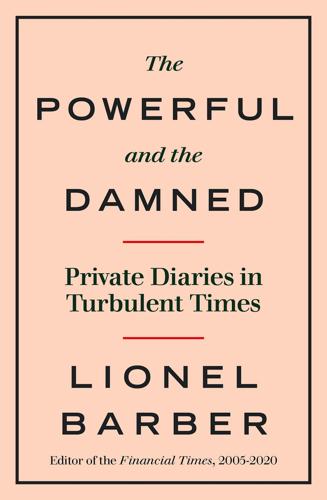
The Powerful and the Damned: Private Diaries in Turbulent Times
by
Lionel Barber
Published 5 Nov 2020
Ren knows Huawei has started to attract interest from US regulators, adding ominously, ‘We are determined to crack the US market … My personal belief is that the Americans are afraid that Huawei is too strong.’ Ren’s interview – deemed off the record at the time – provided a fascinating insight into the company’s global ambitions later reflected at length in an FT feature. It foreshadowed Huawei’s emergence as the leading force in 5G technology, triggering opposition in Europe and the US where President Trump imposed wide-ranging sanctions. By the time the west woke up to the competitive threat, Huawei had either gobbled up or smashed the competition. WEDNESDAY–THURSDAY, 30–31 MARCH The streets of Tokyo are semi-deserted. Under leaden skies, an eerie calm.
…
The ambassador chides us for failing to report that the PM’s meeting with President Xi was a great success which showed a golden era in Sino-British relations. My retort: it feels more like the bronze age under Theresa May who’s gone slow on Chinese investment in our nuclear industry and is under pressure over Huawei, the telecoms equipment supplier eager to invest in Britain’s 5G technology roll-out. Liu argues that, after Brexit, a new diplomatic calculation will apply. The degree to which the UK shows independence from America will determine how close the future relationship will be with China. This was the first hint of China’s ‘wedge strategy’, an attempt to prise the UK away from the US through the lure of economic rewards.
…
W. 54, 63, 188, 314 Bush, George W. 31, 54, 55, 56, 63, 106, 110, 169, 188, 233, 435 Buttigieg, Pete 413 BuzzFeed 258, 395 Cadbury 263 Cambridge Analytica 394, 394n Cameron, David ix, xvi, 81–2, 97, 98, 125, 148, 151, 152, 158, 159, 161–2, 164, 174, 177, 180–81, 191–2, 193, 195, 196, 198, 203, 204, 205, 209, 222, 223, 226–7, 244, 259, 260, 263, 267, 283, 286, 288, 289, 290, 304–5, 308–10, 316, 319, 320, 321, 323, 326, 333, 344, 345, 374–5, 382–3, 388, 389, 414, 417, 427, 438 Cameron, Samantha 81–2, 161–2, 198, 304 capitalism: liberal capitalism model xi, xii, 117, 147n, 276, 312, 330, 334, 335, 339, 353, 355, 401, 419, 434, 436, 439; reform of 352, 353, 410, 439 Carnegy, Hugh 321 Carney, Mark 122, 323–4, 327, 341, 365–6, 371, 412 Catalan independence movement 219, 226 Cayne, Jimmy 24, 25, 85 Centre for European Reform 388–9 Chan, Andy 393 Charles, Prince x, xii, 264–6, 267, 268–70 Charlie Hebdo terrorist attack (2015) xv, 281 Cheney, Dick 54, 56, 233 Chidambaram, P. 38 China xi, 30, 31, 31n, 98–9, 117, 120, 123–4, 123n, 133, 140, 162–3, 169, 182–3, 206–7, 213–14, 228, 233, 241–2, 271, 303–6, 309, 344, 347–8, 351–2, 366, 374–5, 376, 390, 392–3, 395–8, 399, 410, 414, 434, 436, 439, 440 China Entrepreneur Club 233 Chubais, Anatoly 229 Churchill, Winston 24, 24n, 95, 128, 314, 310, 364, 422 Citigroup 68, 69, 85, 113, 114, 228, 404 City Lecture, Cambridge University 264 City of London xii, xiii, 25n, 106, 180, 224, 259, 297, 334, 365, 366, 429 Clark, Pilita 379 Clegg, Miriam 151, 195 Clegg, Nick 151–2, 158, 159, 162, 195–6, 275n, 286, 321, 394, 395, 414 Clinton, Bill 82, 150, 206, 208, 233 Clinton, Hillary 82, 96, 133, 233, 315–16, 331, 332 Clooney, George 204–5 Coalition government, UK 156–7, 158, 159–60, 193, 195–6, 209, 258–60, 275, 275n, 288, 289, 290, 354; austerity policies 209, 210, 259, 273, 289, 319, 438; Big Society concept 152–3 Cochrane, Alan 273 Cohen, Jared 332 Cohn, Gary 341–2 Cold War 96, 233, 314, 354, 395, 396, 398, 436, 438 collateralised debt obligations (CDOs) 45 Collins Stewart 14–15, 17–18, 19–20 Colloque (Anglo-French forum) 255–6 Colombia 140–42 Comcast 268 Communism, collapse of Soviet 88, 129, 137, 228, 344 Conservative Party 67, 71, 97, 106, 128, 139, 148, 151, 152–3, 156–8, 158n, 159, 174, 180n, 195–6, 217n, 223n, 227, 227n, 232, 244, 260, 273–5, 275n, 283–4, 287, 288, 289–90, 309, 310, 327, 333, 343, 345–6, 353–4, 358, 359–60, 365, 381, 388, 410, 410n, 411, 412, 414, 423 Corbyn, Jeremy 11n, 303, 340, 341, 345–6, 354, 363, 399, 402, 410, 427 Costolo, Dick 210–11 Coulson, Andy 191, 223, 223n Covid-19 xi, xvii, 123, 130, 383, 398, 433, 434–6, 438–9, 440–41 Cox, Jo 319 Crabtree, James 247 credit derivatives 37, 62, 66, 186 credit-rating agencies 62, 62n, 84 Crimea 91, 91n, 237n, 239, 275, 277 Crosby, Lynton xvi, 283–4, 287–8, 290, 345–6, 388 Crosby, James 18–19 Cummings, Dominic xv, 313–14, 420n, 423–4, 438 Dacre, Paul x, 76, 192, 195, 196–7, 220, 221, 227, 233, 239, 257, 331, 331n, 357, 363 Daily Mail x, 41, 67, 126, 151, 152, 192, 195, 220, 221, 239, 316, 327, 331, 334, 363 Daily Mirror 11, 32, 100 Daily Telegraph 32, 35, 51, 67, 126, 135–6, 135n, 192, 197, 273, 358, 358n, 359, 422 Dalian Wanda 213 Dalton, Stephen 148, 150 Danone 263 Darling, Alistair 69–70, 83n, 101, 101n, 136, 273 Darroch, Jeremy 267–8 Davidson, Heather 83 Davies, Howard 76–7, 76n, 190 Davis, David 362–4, 363n Davis, Ian 122, 197 DDB (advertising agency) 34 deflation 39, 391 Dell, Michael 120–21 Delors, Jacques 83, 341 Democratic Party, US 82, 98, 99, 187–8, 330, 332, 396; convention (2004) 82, 99; convention (2008) 98, 99; Democratic National Committee (DNC) 330 see also US Presidential Election Democratic Unionist Party (DUP) 157, 157n, 399, 425 Deng, Wendi 191 Deng Xiaoping 124, 129, 183 ‘de-platforming’ 262 Deutsche Bank 295, 383, 404, 410 Diamond, Bob x, 167–8, 212 Dickie, Mure 185 Dickson, Martin 13, 18–19, 102, 106–7, 431 Dilenschneider, Robert 84–5, 332 Dimbleby, Jonathan 340 Dimon, Jamie xiv, 24, 24n, 93–4 Dinmore, Guy 162 Disney 213, 214, 268 Doerr, John 215–16 Döpfner, Mathias x, 283, 291–3, 295, 407 dotcom crash (2000–2001) 4, 16, 76, 84, 184, 228 Dow Jones 59–60, 65, 66, 135n, 282 Dowler, Milly 190 Draghi, Mario xiv, 178–9, 198–9, 200, 212–13, 223, 226, 320, 341, 367, 368, 402, 412–13, 415 DreamWorks 213 Dubai xiv, 102–3, 111, 112, 135, 168, 175 Duberstein, Ken 188 Dudley, Bob 163, 239 Dumfries House 264–5, 269 Duque, Iván 142 Economist, The 26, 205, 221, 238, 258, 282, 294, 354, 381, 389 Edano, Yukio 185–6 Edelstein, Jillian 208 Edinburgh, Prince Philip, Duke of 304 Edward VIII, King 198, 201 Egypt 54, 107, 177, 331 El-Erian, Mohamed: When Markets Collide 113 Elizabeth II, Queen 23, 271, 303–4, 305 England, Andrew 260–61 En Marche 353 Entwistle, George 217–18 Epstein, Jeffrey 7, 7n Erdoğan, Recep Tayyip 335 euro xiii, 61, 64, 84, 100, 172–3, 178, 179, 180, 198, 212, 223, 228, 413, 429 European Central Bank (ECB) xiv, 61, 69, 84, 100, 178–9, 179n, 188, 198–9, 203, 212, 223, 226, 367–8, 402, 412–13, 415–16, 436 European Commission 83, 84, 84n, 179, 274, 343, 344, 363, 402, 406 European Court of Human Rights (ECHR) 274 European Economic Community (EEC) 227 European Financial Stability Facility (EFSF) 198–9 European People’s Party (EPP) 97 European Round Table of Industrialists 409 European Union 437; Brexit see Brexit; Covid-19 and 436, 437; Customs Union 328, 339, 354; euro see euro; fatal flaw in 99–101; ‘fiscal compact’ proposal 198; free movement of people 324; Lisbon treaty 64, 64n, 67, 381; Maastricht treaty 64n, 342, 389, 426, 433; Single Market 196, 315, 324, 328, 339, 341, 354, 366, 425; sovereign debt crisis 100–101, 148, 153–5, 172–3, 177, 179, 180, 188, 198–9, 212, 219, 224, 226, 238–9, 253, 341, 368, 413, 415–16 European University Institute, Fiesole 178 Evans, Harry 6–7, 10 Evening Standard 126, 136–7, 138–9, 345 Exxon Mobil 155 Facebook xi, 178, 200, 215, 216, 222, 247, 347, 394–5, 394n, 439 Fairhead, Rona 29, 66 ‘fake news’ 41, 346, 347 Fallon, John x, 251–2, 257, 281–3, 292, 294, 295, 296, 297, 302 Farage, Nigel 253, 259, 262, 266, 284, 349, 412 ‘fast’ and ‘slow’ news 240, 255 Federal Reserve, US 76, 85–7, 86n, 88, 94–5, 114, 199, 241, 415, 436 Federal Reserve Bank of New York 87–8 Felsted, Andrea 235 Ferguson, Jason 247 Ferguson, Alex 247–8, 251, 389 Fidler, Stephen 21 Fillon, François 205 financial crisis, global xi, xiii–xiv, 19, 22n, 25, 31n, 37n, 44, 62, 66, 69–72, 74–7, 81, 83–8, 92, 93–5, 96, 100–107, 108, 109, 110–13, 114–16, 117–23, 123n, 124, 125, 127–9, 130, 131, 133, 134, 138, 144, 154, 173, 174, 186–7, 228, 232, 245n, 364, 401, 434, 435, 436; Bear Stearns collapse 25, 85, 87–8, 93, 98, 104; Lehman Brothers collapse xiv, 5n, 37, 81, 101–2, 104, 105, 107, 121, 160, 199, 432 financial liberalisation, era of 129 Financial Services Authority 76n, 106, 138 Financial Times xi; ‘A List’ contributors 189–90; advertising revenues 4, 9, 26, 255, 288; advertising/marketing campaigns 4, 33, 34, 70; alpha-male problem 209; app 137–8, 214; ‘B2B’ business 118–20; Boldness in Business awards 262; Bracken House, headquarters move from One Southwark Bridge to 373, 391, 404, 411; Bracken Room 24, 25, 101, 398; ‘Brighton’ meeting 73–4; British Press Awards newspaper of the year (2008) 92; British Press Awards newspaper of the year (2018) 379; Business Book of the Year 112–13, 166, 243–4; Business of Luxury Summit, Monaco (2009) 156; circulation 4, 26, 312, 379, 401, 406–7, 431 see also subscriptions, digital; code of conduct 201; Collins Stewart libel case 14–15, 17–18, 19–20; Commodities Summit 286–7; core mission 9; cost cutting 16, 26, 147–8; ‘digital first’ journalism 224–5, 240, 255, 403, 440; digital transformation of xi, xv, 10, 17, 43, 74, 92, 117–18, 147, 201, 218, 224–5, 240, 241, 255, 257, 272, 285, 394, 395, 401, 403, 432, 440; editorial independence, principle of 60, 93, 251, 282, 288–9, 292, 294–5, 297, 299, 311, 394; editorial leader conference 209–10; FastFT 224; FT Alphaville financial blog 27; ft.com 6, 69–70, 114, 117–19, 167, 240, 321, 380; Future of Capitalism series 129, 133; Future of News conference 379–80; gender balance at top of, plans for 340; Gulf, edition for the 135; ‘Here Day’ 202, 202n; hiring of staff/power to shape through appointments 5, 6, 12–13, 16, 26–7, 43, 51, 158, 189–90, 255, 403; House and Home, Weekend FT supplement 174, 264, 270; How to Spend It 104; in-house lawyer 20n, 200–201, 258, 405; independent sources, stories supported by two 9, 20, 56, 201; ‘Inside Blair Inc’ feature 142; investigations team 291, 368–9, 381–2, 405; Latin America coverage 140–42; LB accepts Nikkei request to stay on as editor 300; LB appointed editor 3–10; LB daily routine as Editor 35–6, 175–6; LB hosts team leader summer event 296–7; LB leaves post as Editor of 430–32; LB news editor of 9, 15; LB rotates top team 147, 302; LB’s essays for 355, 381, 427, 429; LB’s New Year note to staff, LB’s 224–5; LB’s overseas trips see individual nation name; LB’s second term as editor of 197–8, 202–3; LB succession planning at 252, 312, 391, 395, 401, 404, 426, 428, 429–31; LB US managing editor of 3–5; LB ‘walking the floor’ of 431; letters to the FT editor 83; Leveson inquiry and see Leveson inquiry; Lex Column 99–100, 361; Lunch with the FT 72–3, 120, 175, 176, 188, 229–30, 325, 326, 343; Magazine, weekend 208–9, 219, 302, 381, 401, 429; managing editor, change of 26n, 117, 147, 203, 224, 403; mid-morning meeting of commentators and ‘leader writers’ 103–4; motto, revival of original 58; Nikkei and see Nikkei; 125th anniversary 224, 225, 228–30, 234, 235; 1 million paying readers by 2020 target 312, 379, 401, 406–7, 431; origins 24–5, 25n, 224; Pearson and see Pearson; Pearson sells to Nikkei xiv, xv, 281–3, 284–5, 288–9, 291–300, 301–3, 304, 305–6, 310–11, 312, 403, 407, 428; pensioners’ lunch 277; Person in the News 21, 21n; Person of the Year 166–7, 223, 314, 357–8; publishing system 15–16, 26; ‘rebrush’/redesigns 34, 58, 254–5, 272; self-regulation, system of 257–8, 258n; sponsors 166, 243, 262; subscription business 26, 92, 118, 119, 229, 285, 312, 322, 339, 346, 379, 401, 406–7, 431; ‘thought leader’ brand 172; union members 202–3, 202n; US managing editor 5, 5n, 130, 147, 389; US, move into 3–4; ‘We Live in Financial Times’ marketing slogan 34, 44; Weekend FT 127, 174, 194, 208–9, 219, 302, 381, 401, 429 Fischer, Hartwig 377, 377n 5G technology 184, 375 Five Star Movement 203, 380 Flanders, Stephanie 42–3 Fleurot, Olivier 8, 9, 15–16, 25–6, 29 Ford, Jonathan 158 Fowler, Susan 357–8 Fox, Liam 274 Foy, Henry 417, 419 France x, 62, 69, 91–2, 95, 172, 177, 185, 198, 205, 255–6, 263, 326–7, 339, 341, 343–4, 353, 355, 366, 380, 408, 412–13 Fraser, Simon 319–20 Freeland, Chrystia 12–13, 12n, 85, 130, 147, 147n Fridman, Mikhail 90, 275 Friedman, Alan 27–8, 27n Frost, David 45, 137, 245 Frost/Nixon (Morgan) 45 FT Group 29 Fukushima nuclear reactor disaster (2011) 181, 185 Fuld, Dick x, xiv, 46, 85–6, 105 Fu Ying x, 124, 125–6, 241, 242 Gaddafi, Muammar 142, 177, 180, 259 Gandhi, Indira 407 Gandhi, Mahatma 408 Gandhi, Rahul 245 Ganesh, Janan 205 Gapper, John 43, 70, 88, 104–5, 190, 209–10, 221, 432 Garrahan, Matthew 213, 357, 379, 384 G8 237, 237n General Election, UK: (1992) 157, 228, 261; (1997) 12, 101n, 157; (2001) 12, 157; (2005) 12, 157; (2010) 148, 150–53, 156–9, 158n, 174, 173; (2015) 11n, 274, 283–4, 286–8, 289–90, 345; (2017) 343, 345–6, 353–4, 363, 388; (2019) 402 General Electric (GE) 66, 162–3 General Motors (GM) 221, 376 George, Eddie 138 Georgian National Theatre Company 192–3 Germany ix, xiii, xv, 31, 67, 69, 90n, 95, 101, 149, 172, 173, 179, 180, 188, 198, 199, 203, 219, 228, 237–8, 238n, 242n, 274, 283, 291, 292, 309, 331, 339, 343, 358–9, 368, 401, 404, 405, 406, 407, 413, 415, 416, 419, 421, 427, 433–5, 437 Ghosn, Carlos 375, 375n Giampaolo, David 233 Gibbs, Robert 131, 359 Gibson, Janine 395 Giles, Chris 210 Glasenberg, Ivan 287, 428, 428n Glastonbury Festival 322 Glencore 286, 287, 428n globalisation 34, 116, 228, 312, 333, 335, 348, 434 Gnodde, Richard 429–30 Gold, Dore 109, 109n Goldman Sachs xiv–xv, 24n, 31, 31n, 37, 55, 84n, 86, 87, 112, 122, 166–7, 178, 179, 243, 341, 342, 429 González, Felipe 225 Goodwin, Fred 22–3, 22n, 72, 75 Google xi, 137, 160–61, 178, 214–15, 326, 332, 439; Google Camp conference, Sicily 422; Mountain View headquarters 73–4; Street View 160–61 Gorbachev, Mikhail 90, 136–7, 138, 250, 344 Gordon, Sarah 209, 287, 383 Gove, Michael 255, 315, 316–17, 318, 323, 362, 410 Gowers, Andrew 5, 5n, 7–8, 12, 13, 26, 46, 105, 160 Grade, Michael 65 Grant, Charles 388–9 Grauer, Peter 212–13 Grayling, Chris 274 Great Depression 94, 114, 130, 335 Greece 99–100, 148, 153, 154, 172–3, 177, 211, 212, 238, 253, 341, 413 Greenberg, Maurice ‘Hank’ 36 Green, Damien 362–3 Green, Philip x, 162, 167, 235, 371 Greenspan, Alan 76–7, 88, 94, 129 Greig, Geordie 265 Grimes, Chris 403 Grove, Andy 420 G20 92, 117, 123, 123n, 131, 143, 408, 419, 420 Guardian 27, 35, 76, 82–3, 151, 161, 165, 190, 191–2, 197, 236, 237, 255, 258, 290–91, 318, 395, 440 Guerrera, Francesco 102 Guha, Krishna 94 Guinness, Sabrina 300–301 Gu Kailai 206 Gunvor 286, 287 Guthrie, Jonathan 361 Haass, Richard xvi–xvii Hague, William 274–5, 275n Hall, Jerry 317 Hall, Tony 217 Hamas 54, 108, 108n Hammond, Philip 324, 342–3, 345, 362, 365, 373, 420, 420n Hancock, Matt 413 Hannigan, Robert 149, 149n Hanson, Nigel 20n, 200–201, 258, 405 Harding, James 28, 192, 389 Harding, Robin 181, 284, 391 Harry, Prince 422 Hastings, Max 126–7 Hastings, Reed 398–9 Hayward, Tony 160, 163 HBOS 18–19, 104, 122, 127, 128 Heinz 263 see also Kraft Heinz Heywood, Neil 206 Heywood, Jeremy 258–60, 342, 364–5, 414–15 Hill, Andrew 244 Hill, Dave 11 Hille, Kathrin 183 Hill, Fiona 342, 349, 349n Hill, Jonathan 342–3, 342n Hilton, Steve 345 Hiroshima, Japan 284 Hitchens, Christopher 56–8, 57n, 72–3, 205–6 Hizbollah 107, 249 HK National Party 393 Holbrooke, Richard 57, 132–3, 132n, 148n, 170 Hollande, François 255–6 Hong Kong xvi, 60, 217n, 304, 350–52, 390, 392–3, 414 Hornby, Andy 19 Hoskins, Carine Patry 201 House of Commons 152, 193, 259, 343, 363n, 399–400, 423; Digital, Culture, Media and Sport Committee 216n, 239–40; Treasury Select Committee 127 House of Lords 72, 158, 229, 275, 275n, 349, 363, 363n, 394, 438 House of Representatives, US 106 Howard, John 283 HSBC 22, 22n, 121, 122, 237 Huawei xii, 182–4, 375, 398, 399 Huffington, Ariana 99 Huffington Post 99, 258, 380n Hu Jintao 99 Hunt, Jeremy 274, 410, 411–12, 413, 425 Hussein of Jordan, King 102, 110 Hussein, Saddam 28, 57 Hutton, John 71 Hyon Hak-Bong 253–4 Ignatius, David 276 IMF (International Monetary Fund) 118, 123, 219, 246n, 402, 412 Immelt, Jeffrey 162–3 immigration xi, 67, 203, 283–4, 309, 313, 318, 319, 334, 335, 343, 354, 410, 420 Inagaki, Kana 181 Independent 32, 41, 192 Independent Press Standards Organisation (IPSO) 257, 257n India ix, 30, 37–40, 123n, 129, 168–70, 203, 228, 244–7, 309, 348, 383, 407–9 inequality xiii, 193, 273, 410 inflation 30, 52, 95, 138, 251, 415, 435 Instagram 200, 347, 395 interest rates 30–31, 61, 70, 86, 100, 138, 323, 415 International Security Assistance Force (ISAF) 149, 150 Iran 54, 245n, 248–9, 249n, 250, 251, 251n, 259, 307, 377, 425; US nuclear deal with 248–9, 250, 251, 259, 307 Iraq 28, 108, 111, 243n; US-led war in 11, 12, 54, 55, 56, 57, 108, 110, 111, 142, 206, 208–9, 228, 330, 377, 387 Ireland 148, 188–9, 212, 425 ISIS 378 Islam, radical xv, 107, 108n, 170, 171, 248, 249, 251, 281, 378, 397 Israel xiv, 102, 107–9, 109n, 141, 208–9, 250, 251, 292, 319, 378, 382 Italy 27–8, 27n, 99, 100, 162–3, 178–9, 196, 203–4, 212, 214, 238, 239–40, 367, 380, 400, 413 Ivanov, Sergei 329–31, 417 Jackson, Andrew 348 Jacobs, Emma Gilpin 201 Jacques, Jean-Sébastien 386–7 Jain, Anshu 295 Jaitley, Arun 244–5 Jang Song-thaek 253–4 Japan ix, xv, xvi, 17n, 69, 181, 185–6, 281, 283, 284–5, 296, 298–9, 300, 301–3, 304, 305–6, 308, 325, 334, 359, 367, 371–2, 374, 390–92, 402, 403–4, 408, 411, 420, 427–9 Javid, Sajid 410, 420n Jenkins, Antony 285–6 Jenkins, Patrick 166 Jio 40, 247 jishuku (‘self-restraint’) 185–6 Johnson, Boris xvi, 37–8, 38n, 40, 98–9, 138, 139n, 158, 159, 200, 242–3, 244, 310, 315, 323, 325, 344, 345, 358, 359, 362, 371, 373, 388, 402, 410, 410n, 412, 420, 420n, 421, 422, 423, 425–6, 435, 437 Johnson, Jo 37–8, 38n, 40, 244, 373 Johnson, Woody 364 Jones, Claire 416 Jonsson, Martin 240 Jordan 102, 107, 108, 110 JPMorgan Chase xv, 24n, 88, 93–4, 98, 142 Judge, Igor 194–5 Juncker, Jean-Claude 274–5, 343–4, 406 Kagame, Paul ix, xvi, 142, 340, 354–6, 380 Kaiser, Bob 332 Kalanick, Travis 357 Karzai, Hamid 149–50 Kasparov, Garry 89, 91 Katzenberg, Jeffrey 213–14 Kaufman, Henry 186–7 Kazmin, Amy 407 Kellaway, Lucy 159 Kelly, General John 366n, 367, 367n Kelner, Simon 32, 41 Ken Hu 183, 398, 399 Kengeter, Carsten 193 Kennedy, John F. 96n, 380–81, 381n Kenny, Enda 188–9 Kerr, Simon 112 Kerry, John 68, 222 Keswick, Henry 304, 304n Keynes, John Maynard 88, 129 Khalaf, Roula x, 29, 102–3, 110, 111–12, 135, 177, 209, 248, 250, 302, 306, 308, 321, 322, 339, 371, 379, 390, 392, 428–9, 430, 431, 432 Khan, Imran 170–71 Khan, Sonia 420, 420n Khashoggi, Jamal 308, 392 Kim Jong-un 253, 374, 397 King, Mervyn 30–31, 31n, 71–2, 76, 106, 128–9, 173, 212 King, Rodney 148 King, Stephen 237 Kinnock, Neil 157, 261 Kissinger, Henry 54, 207 Kita, Tsuneo 298, 299, 300, 301, 302, 310–11, 312, 321, 391, 401, 402, 404, 411, 428–9, 430, 432 Klerk, F.W. de 229–30 Knight-Bagehot fellowship programme, Columbia Journalism School 46 Kock, Gerhard de 51 Kohl, Helmut 344, 426 Kosovo 89, 89m Kraft Heinz 263, 352, 353 Kushner, Jared 367 Kuwait 111, 142, 206, 208 Kynge, James 124, 303, 393 Kyriacou, Kristina 268, 270 labour market, growth in size of world’s 228 Labour Party 11, 11n, 12, 30, 41, 64, 68, 71–2, 101n, 127, 128, 151, 157–8, 158n, 159, 162, 163–4, 193, 207, 228, 239, 259, 273, 284, 287, 288, 290, 303, 319, 340, 341, 354, 377n, 402, 438 Lady Margaret Hall, Oxford 395 Lambert, Richard 115–16, 244, 252, 297, 411 Lam, Carrie xvi, 350–51, 393, 414 Lamont, James 168, 203, 224, 302, 403 Lansley, Andrew 180, 180n Lavrov, Sergei 237 Lawson, Nigel 229 Lazard 121, 121n Leahy, Terry x, 23–4 Lebedev, Alexander 137, 138–9 Lebedev, Evgeny 136–7, 138–9, 139n, 376–7 Lee Jae-yong (J.Y.
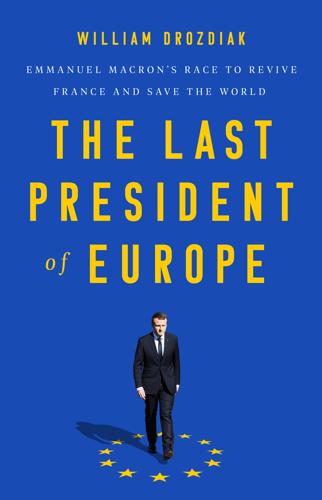
The Last President of Europe: Emmanuel Macron's Race to Revive France and Save the World
by
William Drozdiak
Published 27 Apr 2020
China’s 2017 national intelligence law, which requires “citizens and companies to support, cooperate and collaborate in national intelligence work,” has raised fears that Huawei could be asked by the Chinese government to incorporate “back doors” into equipment that would allow Beijing authorities access for spying or sabotage purposes.25 Germany’s foreign and interior ministries, after consulting with the United States and other allied nations, have sought to prevent Huawei and other Chinese suppliers from participating in the bidding process for 5G contracts in Germany. American diplomats have warned the European allies that Washington will be forced to restrict the sharing of intelligence with any country that chooses to install Huawei’s 5G systems. America’s alarmist posture is based on the potentially dramatic impact of the rollout of 5G technology on both economies and modern systems of warfare. The enormously faster broadband speeds of 5G systems—up to ten gigabits per second, or ten times faster than 4G systems—will transform our lives in ways that few people can imagine. With such advanced technology, it is very likely that pilotless fighter jets, smart missiles, and automation in nearly all aspects of everyday life will become commonplace.
…
With such advanced technology, it is very likely that pilotless fighter jets, smart missiles, and automation in nearly all aspects of everyday life will become commonplace. While some European governments challenged the American arguments, others took them seriously. Once an ardent suitor of Chinese investments, Poland grew suspicious about adopting the Chinese 5G technology after the Warsaw government arrested the Chinese regional director of Huawei for alleged espionage activities. The European Commission expressed qualms that becoming too reliant on either Chinese or American digital technology could pose a risk to Europe’s strategic autonomy but left the choice to national governments. “5G networks will provide the future backbone to our societies and economies, connecting billions of objects and systems, including sensitive information and communications technology systems in crucial sectors,” a Commission strategy paper says.
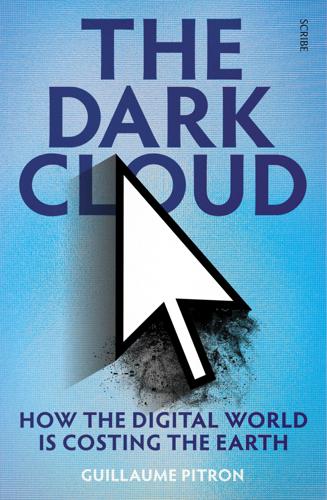
The Dark Cloud: How the Digital World Is Costing the Earth
by
Guillaume Pitron
Published 14 Jun 2023
Your questions answered’, CNN, 6 March 2020. 11 Interview with Martin Péronnet, managing director of Monaco Telecom, 2020. 12 ‘South Korea reaches almost 13 million 5G subscribers in January’, RCR Wireless News, 1 March 2021. 13 Interview with Cho Mu-hyun, journalist, 2020. 14 Keynote by Stéphen Kerckhove, managing director of Agir pour l’Environnement, at the conference ‘La 5G: avancée technologique, recul écologique?’ [‘5G: technological advance or ecological decline?’), La Recyclerie, Paris, 9 March 2020.] 15 ‘5G: an ambitious roadmap for France’, ARCEP, 16 July 2018. 16 Interview with Jean-Pierre Raskin, researcher and lecturer at Louvain School of Engineering (Belgium), Institute of Information and Communication Technologies, Electronics and Applied Mathematics (ICTEAM), 2020. 17 ‘China’s telecoms carriers push to complete “political task” of 5G network roll-out amid coronavirus crisis’, South China Morning Post, 5 March 2020. 18 ‘Merkel fordert mehr Tempo beim digitalen Wandel’ [‘Merkel urges calls for more speed in the digital transition’], Süddeutsche Zeitung, 1 December 2020. 19 ‘Le retard numérique allemand affole Angela Merkel’ [‘Germany is behind on digital and it’s terrifying Angela Merkel’], L’Obs, 31 January 2017. 20 Interview with John Booth, consultant at Green IT Amsterdam, 2020. 21 ‘Gallium: China tightens grip on wonder metal as Huawei works on promising applications beyond 5G’, South China Morning Post, 20 July 2019.
…
Metros’, IEEE Communications Society, 19 December 2017. 23 ‘5G’s rollout speeds along faster than expected, even with the coronavirus pandemic raging’, CNET, 30 November 2020. 24 ‘Canalys: 278 million 5G smartphones to be sold in 2020’, GSM Arena, 10 September 2020. 25 Keynote by Michèle Rivasi, Member of European Parliament with Europe Écologie les Verts, at the conference La 5G: avancée technologique, recul écologique? [‘5G: technological advance or ecological decline?’], La Recyclerie, Paris, 9 March 2020. 26 Such fears fall under what doctors call the ‘the nocebo effect’, which is characteristic of our modern, risk-averse societies. Unlike the placebo effect, the nocebo effect occurs when a patient believes they are suffering the effect of what is in fact an inert substance that has been presented as an active medication. 27 ‘It is wholly a confusion of ideas to suppose that the economical use of fuel is equivalent to a diminished consumption.
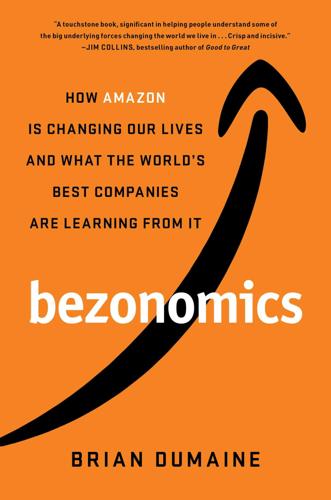
Bezonomics: How Amazon Is Changing Our Lives and What the World's Best Companies Are Learning From It
by
Brian Dumaine
Published 11 May 2020
Alphabet, Facebook, Netflix, Alibaba, JD.com, and Tencent have built huge, powerful businesses based on their ability to collect and analyze data, and keep applying those learnings to make their businesses smarter and their offerings to customers more attractive. In their pursuit of AI-driven technologies such as voice and facial recognition, the Internet of Things, and robotics, they’re creating automated business models that will crush traditional businesses that fail to adapt to this new world. And the emergence of 5G technology, which will replace our current digital networks, will only widen the gap. Experts predict that this next generation of Internet connectivity will be as much as a hundred times faster than today’s web. (On a 5G network, a two-hour movie can be downloaded in seconds.) For traditional companies, adaptation to this new world doesn’t mean simply hiring a gaggle of data scientists to work on a few pet projects.
…
See wages Eno, Brian, 71 e-Palette self-driving minivan, 175 ethical challenges, and big data, 90–91 European Union, 259 Everything Store, The (Stone), 3, 32, 42, 96, 185, 274 executives at Amazon Bezos’s challenges to, 53–54 confrontational culture of Amazon and, 54–57 selection of for running new businesses, 226 shadow program and, 51–53 S-team and, 15, 52–53 succession and, 53 work-life harmony and, 82–83 experiential retailing, 196–97, 200, 270 FAA, 178–79 Facebook addictive nature of, 17, 18 AI-driven flywheel at, 88 AI skills and customer knowledge of, 8, 270 antitrust critics and proposed breakup of, 264 customer data from, 120 digital advertising and, 220 economic power of, 265–66 identification with founder, 53 number of employees at, 123 public perception of Zuckerberg at, 57, 58 reviews for a fee available on, 158 Sephora’s catalogs on, 206 value of founder of, 241 FaceFirst, 197–98 facial recognition software, 197–200 Alibaba’s use of, 198, 199 Amazon’s tools for learning about, 218 concerns about using, 198–99 controversy over contract for, 35–36 customer recognition in stores using, 197–98 Google employees’ objections to, 58 payment systems using, 198–99 possible future uses of, 199–200 privacy issues and, 198–99 retailers’ use of, 197–200 security of, 199 Fairchild Semiconductor, 125 Fair Shot (Hughes), 250 fake reviews, 21, 151, 153, 158 FakeSpot, 159–60 fashion line, from Amazon, 201 fashion photo studios, 201 Federal Aviation Administration (FAA), 178–79 Federal Trade Commission (FTC), 158 FedEx, 23, 98, 169–70, 172, 174 finance industry, 231–36 Amazon as financial service business in, 234 Amazon’s entry into, 231–32 Amazon Visa card and, 234 Ant Financial in China as model for Amazon in, 234–35 Bezos’s focus on, 232 customer data in, 232–33 Health Savings Account debit cards in, 231 mobile payment business challenge for Amazon in, 235 1-Click purchasing and, 232–33 regulatory challenges in, 235–36 robo-advisory services in, 235 small business loans and, 233–34 financial problems, and shopping addiction, 18–19 Financial Times, 63 Fire Phones, 64, 82 Fire TV, 23, 26, 31, 66, 80, 81, 100, 104, 119, 237 Fiverr.com, 158 5G technology, 270 flywheel paradigm. See also AI flywheel Amazon’s culture and, 4–5 Bezos’s expansion of, 5–6 Collins’s conception of, 78–79, 83 other companies use of, 5 food delivery business, 64 Ford, Henry, 124 Ford, Martin, 250 Ford Fusion hybrid automobile, 180 Ford Motor Company, 111, 175, 180 Fox, Justin, 81 Fox, Nick, 111 Fox News, 251 France, 90, 189, 234, 241, 248 Fred Hutchinson Cancer Research Center, Seattle, 223, 251 free delivery options Amazon orders with, 20, 95 Amazon Prime with, 4, 10, 14, 22, 80, 96–97, 98, 101, 154, 171, 186 Best Buy and, 205 Diapers.com and, 184 minimum order or fee for, 97 psychology of shopping and, 97 Walmart and, 97, 184, 186 Whole Foods orders, 171 Freelancer.com, 158 free market capitalism, 260 free offers with Amazon Prime book downloads on Kindle, 97 music streaming service, 10, 26, 80, 97, 100, 260 original TV shows, 4, 100, 101, 260 storage space on cloud, 97 video streaming service, 25, 80, 100, 101, 260 Whole Foods deliveries, 171 FreshDirect, 170, 189 FTC, 158 fulfillment centers.

MegaThreats: Ten Dangerous Trends That Imperil Our Future, and How to Survive Them
by
Nouriel Roubini
Published 17 Oct 2022
In a world where data will become an asset as valuable if not more valuable than traditional goods and services, data protectionism lurks. As restrictions multiply, they will clog trading in goods and services. Where do trade restrictions begin and end? This is actually one of the biggest threats to globalization. Restricting trade in technology will eventually affect all trade. Today the US government says we don’t want 5G technology from Huawei for our telecom systems because it has a back door for the Chinese government to keep tabs on Americans. We’re also urging Europeans and other allies to avoid that 5G. But tomorrow, guess what? Every consumer product will have a 5G chip. First you track it in the production system, and then to operate anything in the Internet of Things it must have a 5G chip.
…
If decoupling forces poor and semi-authoritarian nations to choose a side, they may prefer China’s geopolitical framework, robust growth, and less expensive technology. The Chinese will try to snare market dominance with preferential trade agreements and access to investment capital. Its cheaper 5G technology will vault developing countries forward. It will furnish top-notch IoT (Internet of Things), AI, and telecom solutions. China will advise clients to replace dollars with renminbi as their reserve currency. Chinese lenders will gain influence. Surveillance technology and tactical weapons will help these client states squash domestic dissent.
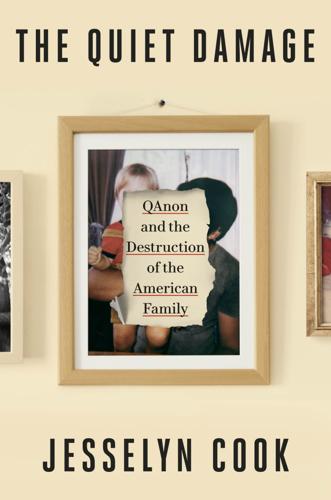
The Quiet Damage: QAnon and the Destruction of the American Family
by
Jesselyn Cook
Published 22 Jul 2024
Lockdowns, curfews, mask mandates, and social distancing rules were oppressive measures to yield public subservience. The same was true of the coming vaccines, which could also be tools to implant location-tracking microchips or to wipe out humanity—only time would tell. Cabal-commanded telecom giants were rolling out 5G technology to make people sick. Black Lives Matter rallies and protests in the wake of Floyd’s death (a false flag) weren’t really about racial justice at all; they were orchestrated by antifa to stymie Trump’s rising support among the Black electorate. Everything—everything—could be contorted to fit the conspiracy theory.
…
December 25 brought clouds in northern Tennessee and rain in the Bay Area. On Telegram, QAnon channels were alight with speculation about an early-morning bombing near an AT&T network facility in downtown Nashville, convinced that it was a false flag, or perhaps the work of a heroic anon targeting 5G technology operations. Emily spent her Christmas like any other day, ranting feverishly online to no one in particular. “Deep state mind control is holding my three highly educated millennial children hostage, with anger and unrecognizable venom,” she lamented in a middle-of-the-night musing. Adam spent his Christmas reading each of the thirty-six tweets she posted that day, between rereading her emails, which were by then all but seared into his memory.

Korea--Culture Smart!
by
Culture Smart!
Published 15 Jun 201
South Korea has taken to cell phones in a big way, and two of the world’s main manufacturers, LG and Samsung, are South Korean. KT is the main provider. Visitors will find that acquiring and operating a cell phone is easy and useful. In early 2019, South Korea became the first country to roll out a fifth generation, 5G, mobile wireless service, built into the newly released Samsung smartphone. Cell phones have become a huge part of everday life, especially among the young. Smartphones are used for activities such as banking, making payments, including public travel passes and bills, and communications. The “digital wallet” is the new norm, and cash rarely changes hands.
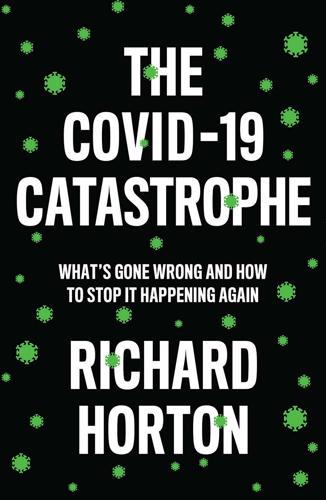
The COVID-19 Catastrophe: What's Gone Wrong and How to Stop It Happening Again
by
Richard Horton
Published 31 May 2020
Distracting attention away from the dangers of live-animal markets will only diminish the pressure to close those markets down. Another theory was that 5G wireless technology damaged human immune systems, thereby contributing to severe COVID-19 illness. 5G masts have been attacked and burnt down as a result. WHO has ruled that 5G signals pose no risk to human health, but still the idea persists. A second source of misinformation concerns the symptoms of the illness and how the virus is transmitted. In India, some Hindu nationalists have sought to argue, incorrectly, that the Muslim community had tried to spread the virus deliberately to the Hindu population.

Gambling Man
by
Lionel Barber
Published 3 Oct 2024
Masa himself confessed that his inability to understand the American regulatory set-up was ‘one of the biggest mistakes of my life’. If there was one bright spot, it was Sprint’s earlier acquisition of Clearwire, the US wireless operator with valuable mobile spectrum. Combined with Sprint’s own network, the spectrum served as a future platform for high-speed 5G technology. This would prove an indispensable bargaining chip in later merger negotiations with T-Mobile. Marcelo Claure cut costs, sharpened the brand and improved customer service. But far from sprinting, he was running to stand still. Masa, too, poured every ounce of energy into the turnaround, working seven days a week, often going on calls from between 10 p.m. and 2 a.m., Tokyo time.
…
(SIMI), 236–7; SoftBank Investment (SBI), 166–7 software technology: CD-ROMs, 86; distribution business, 3–4, 51–6, 61, 65–7, 73–4, 334; evolution of, 51; Gates’ alliance with Japanese companies, 65, 66–7; Gates and Nishi standardization plan, 65, 66–7; Improbable (British company), 286*; and Kotick, 72, 73; ‘localization’ of in Japan, 74; Masa’s speech translator venture, 37, 39–45, 48, 114, 171*; Microsoft’s BASIC programming language, 66; mouse innovation, 73; MSX system, 66–7; services business, 89–90; Starcom Networks in China, 145; and telemarketing business, 86–7; turbocharges PC revolution, 49; US as centre of innovation from mid-1980s, 74–7; Windows system, 76 solar power, 218, 219–21 Son, Masa’aki (brother of Masa), 51, 67, 82, 85 Son, Masami (née Ono, wife of Masa), 31, 32–3, 36, 38, 39, 49–50, 62; changes family name to Son, 79; wedding day (September 1978), 41–2 Son, Masanori (brother of Masa), 82 Son, Masayoshi (Masa): ‘10-day war’ with Nishi, 66–7; ‘30-Year Vision’ (2010), 202, 203–4, 208–12; 72 as lucky number, 93; ability to charm elders of big business, 35, 41, 53–4, 64, 71, 90; Asahi–Obunsha deal, 115–16, 117–18; baby daughter born, 50; barefoot habits, 56; battle with NTT, 156–7, 158–9, 160–63, 168, 187, 188, 189, 191, 192–3; bets on Nasdaq derivatives (2020), 311, 312–13; and Big Man theory of history, 321; birth of (8 August 1957), 16–17; born with two names, 16–17, 18, 28–9, 78–9, 82; borrows from domestic bond market, 98–9, 100, 107, 158, 166; and bursting of dot.com bubble, 148–51, 156, 284; business persona, 87, 88–9, 91–2, 99–100; buys house in Kansas, 228–9, 324; capacity for compassion, 211–12, 214, 221; chance encounter with Hong Lu, 38–9; chance encounter with Sasaki (1977), 34, 35, 36; childhood of, 17–21, 23–4, 185–6, 211; chronic hepatitis diagnosis, 57, 61–2, 63, 67–9, 201; and Cisco Japan, 89–90, 103, 162; and computer technology at Berkeley, 36–8; con artists attracted to, 81; and culture of Silicon Valley, 101–2; Deadwood venture with Kevin Costner, 129–30; deal with Joshin Denki, 53–4, 55; demands Japanese naturalization as child, 23–4; Digitalker debacle, 44–5, 171*; disappears from public view (November 2022), 326, 327, 330; disdain for ‘salaryman culture’, 124; as disruptor/insurgent in dot-com bubble Japan, 137–8; as dokegata (clown or trickster), 161; and Dolotta, 74–8, 91, 103; as drawn to historical analogies, 2–3, 68, 134, 162–3, 202*, 207–8, 297, 303, 333; early money-making ventures in USA, 33, 36–7, 39–47, 171*; education in California, 30–34, 35, 36–9, 40–47; electronic speech translator venture, 37, 39–45, 48, 114, 171*; enters set-top business, 119; ‘epiphany’ (fall of 1976), 33, 331; and ethical boundaries, 5, 279; experiences of discrimination, 18, 23, 24, 28; family background of, 6, 9–12, 13–14, 15–17; family showdown over Mitsunori’s debts, 85–6; family’s wealth in his childhood years, 23, 84; father’s encouragement during childhood of, 19–20, 185–6; on first mover advantage, 166; first visit to China (1995), 144–5; first visit to USA (1973), 27–8; Den Fujita’s influence on, 24–6, 33; and Fukushima nuclear disaster, 213–22, 223, 298; funding of Japanese scholars overseas, 102*; and Bill Gates, 66, 72, 73, 77, 266–7; Gates on, 66; giant private complex in Chiba, 324; and Lex Greensill, 293–4, 319–20; growth potential as article of faith for, 51, 54, 108, 111, 131, 132, 134, 143, 173, 176, 253–4, 334; happiness through technology vision, 146–7, 209–10, 237; holding in NCB, 138–9, 158; impact of global financial crisis (2008), 194–7, 201; importing of US ideas into Japan, 83–4, 107, 124–6; and increased regulatory power, 323–4; insatiable ego/vanity of, 173, 214, 221, 272, 275, 278, 282–3, 295; insists on studying in USA, 28–30; investments during dot-com bubble, 133–6, 138–41, 143–4, 148, 284, 328; invests in UTStarcom in China, 145–6, 158; joint venture with Nasdaq (1999), 2, 138, 148; Korean identity, 6, 18, 23–4, 28–31, 32, 35, 42–3, 44, 49–50, 78–9, 211–12, 334; and Kotick, 72, 73; Dr Kumada treats, 68–9; lack of social graces/people skills, 35, 56, 147, 217, 224–5, 274; and leverage, 98, 127–8, 185, 191, 196, 240, 274, 300; limitless attitude to risk, 5, 54–5, 57, 133–4, 140–41, 159–61, 210–11, 273, 309–13, 331; love of the dramatic gesture, 87, 99, 100, 104, 119; Lu on, 146; luxury home in central Tokyo, 204–7; and “Man’s pride” (trust), 170–71, 195–6; mansion in Roppongi, 117, 204; marketing business (Unison World), 50–51; meeting with Buffett (25 June 2017), 273–4; meeting with Mohammed bin Salman (September 2016), 264–5; meetings in Downing Street (July 2016), 251–2; meetings with Trump, 267–9, 270, 294; meets Masami at Holy Names College, 31, 36; as minor celebrity in China, 142–3; moves to Tokyo (early-1980s), 52; and Rupert Murdoch, 114–16, 117–19, 120, 121; napkin trick, 87, 88, 234, 270, 325; naturalizes himself as Japanese citizen, 78–9; NCC Box developed by, 69; new chip-making venture, 329–30, 334–5; Omori on, 71; Omori removed by, 70–71; ‘P-30’ portfolio of top tech companies, 307; persistence/single minded focus, 37, 39, 41, 45, 46; personal borrowing/spending, 86, 93, 130, 181–2, 194–6, 204–8, 299, 324–5; personal myth of, 6, 51–2, 114, 205–6; personal security/privacy, 206, 246, 263, 324; press attacks on over dot.com bubble, 149–50; private companies owned by, 86, 93, 122, 125, 127, 128, 130, 131; Project Fortitude with Neumann, 277–8, 279–80; promotes solar power, 218, 219–21; public equities trading strategy (SB Northstar), 303, 307–14, 315–16, 320, 325, 329; and regulators in USA, 226–7, 229–31, 232, 240, 275–6; reinvention after dot-com crash, 4–5, 156, 201; relationship with Jobs, 189–91, 192–3, 223; reputation as reliable middle man, 83; return visits to Berkeley, 55–6; returns to Japan (March 1980), 47, 48; reveals Korean identity to school friends, 32; as richest man on the planet (February 2000), 3–4; second marriage ceremony in Kyushu (1980), 49; secrecy over travel arrangements, 76–7, 263; secret mansion in central Tokyo, 6, 204–7, 238–9, 315; self-belief, 20, 35, 40–41, 135, 146, 201, 272; sense of obligation to parents/grandparents, 18, 85; SoftBank launch tale, 51–2, 78; and SoftBank whistleblowers, 122–4, 126–7, 131; struggles with geopolitics, 314, 320–22, 324; sues Japanese government over mobile licence (2004), 178–9; as susceptible to fellow dreamers, 272–3, 276–8; talks with Elon Musk, 274–5; and Tamagawa development project, 81–2, 86; taste for financial engineering, 98, 123, 312–14; and tax avoidance, 62–3, 308; as a techno-optimist, 4, 133, 156, 208–12, 331–3; tin-roofed office in Fukuoka, 50–51; trip to Japan with Mozer (1979), 43–4; trip to South Korea with Lee, 29, 211; understanding of ‘black box’ in Japan, 73–4; use of opaque corporate structures, 123, 125–6, 127–9, 130, 295, 296; Velfarre disco event (February 2000), 1–3; video games venture (Unison World), 46–7, 50, 62–3; visits Sasaki in Nara (1978), 40; wedding day (September 1978), 41–2; wish to step down as SoftBank CEO (March 2011), 218–19; Woodside property in Silicon Valley, 233, 245, 286, 324; at World Economic Forum (Davos), 2, 147, 148, 167, 294 see also SoftBank; Vision Fund Son, Mitsunori (father of Masa), 9–10, 11, 12, 67; birth of son Masa, 16–17; brief return to Korea (1946-7), 13–14; character of, 19; encouragement of Masa as a child, 19–20, 185–6; entrepreneurship of, 18–19, 20, 21–4, 54–5; family showdown over debts of, 85–6; hawks illegal liquor, 15–16; ill health, 30, 38, 327; large wooden home outside Tosu (‘The Palace’), 19–20, 22*, 44, 81, 85–6; Lions business, 22–3; loan sharking business, 21, 23; Masa visits with Mozer (June 1979), 44; opposes Japanese naturalization, 23–4; and pachinko industry, 21–4, 54–5, 85; personal indebtedness levels, 22–3, 81–2, 84–6; and pigs, 16–17, 18–19, 185–6; and Son’s chronic hepatitis, 68; squanders money on real estate, 81–2, 84–6; supports Masa in California, 38; Tamagawa venture, 81–2, 86; visits Nara with Masa (1978), 40; visits to California, 39 Son, Taizo (brother of Masa), 106, 202–3 Son, Tamako (mother of Masa), 16–17, 19, 28, 30–31, 44 Son Jong-gyeong (grandfather of Masa), 9, 10–11, 23; brief return to Korea (1946-7), 13–14; character of, 10, 11, 14, 15, 16 Sony, 43, 101, 118–20, 237; Walkman, 48 Sord (electronics company), 66 South Korea, 29, 178, 211 Soviet Union, 17 Space Invaders, 45–6 Sprint, 172, 243, 263, 274, 296, 299–300; Claure at, 228–31, 287, 323–4; Masa buys, 224–7, 228–31, 232, 242, 275; Masa’s T-Mobile merger plan, 225–7, 232, 235, 240, 267, 268; merger with T-Mobile (2020), 298, 317–18, 323–4, 334; sale of, 319 Stanford University, 27, 70, 103 Star TV, 112, 114–16, 118–21 Starcom Networks, 145 Stephenson, Randall, 192 Stripe, 103 Sullivan & Cromwell, 305–6 Sun, David, 108–9, 110–11 Sun Microsystems, 77 Sun Tzu, 169 Sundaram, Ram, 229 Svanberg, Carl-Henric, 188 Symbotic, 328 Taisei Corporation, 205 Taito, 45–6, 46* Taiwan, 17, 38–9, 119 Tamagawa, 81–2, 86 Taobao, 174, 176–7; launch of (May 2003), 169–71 Taoist thought, 146 Tata Group, 181 telecoms, 113, 119; ADSL (asymmetric digital subscriber line), 159, 172, 205; Airtel, 223–4; and ARM Holdings, 242, 244–55, 308; broadband, 145, 156–63, 164–7, 171–4, 178, 265–6; broadband revolution in Japan, 156–63, 164–7, 171–4, 178; in China, 145–6; and Cisco Systems, 89–90, 162; Claure’s handset resale concept, 227–8; deregulation in Japan, 69, 156, 179, 191; digital TV revolution, 113–16, 117–19, 120–21; Ethernet services to business, 174; fibre optic broadband networks, 159; foreign investors in Japan, 172–4; high-speed 5G technology, 231; internet telephone calls, 165; IP-VPN leased-line networks, 174; Japanese infrastructure, 158, 159–61, 166, 178–80, 188, 193; Japan’s TV market, 112, 113–16, 117–19, 120, 121; Masa’s acquisitions strategy (2011-14), 224–7, 232; Masa’s iPhone distribution deal, 190–91, 193; Masa’s marketing/retailing innovations, 187–8, 224; Masa’s ‘Yahoo!
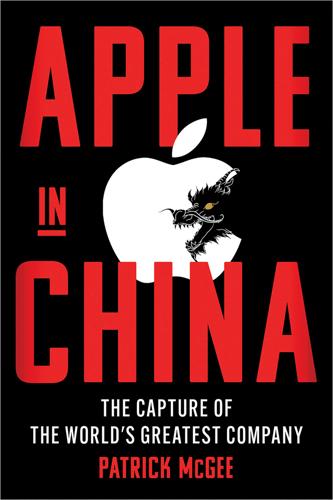
Apple in China: The Capture of the World's Greatest Company
by
Patrick McGee
Published 13 May 2025
Huawei, which makes cellular infrastructure in addition to smartphones, was an early leader. Its first 5G phones hit the market in August 2019, fourteen months before Apple, and by June 2020 it was selling 7 million such devices per month. But when the sanctions hit, Huawei’s smartphone business collapsed. It lost $30 billion of revenue in a single year. It was also forced to spin off Honor, its sub-brand, avoiding job cuts and enabling the budget-oriented division to survive because it would no longer be subject to the same sanctions. Apple was suddenly the only game in town for premium 5G phones. Huawei’s share of the Chinese market plummeted from a peak of 29 percent to just 7 percent; Apple filled the void, its China share near doubling from 9 percent to 17 percent.
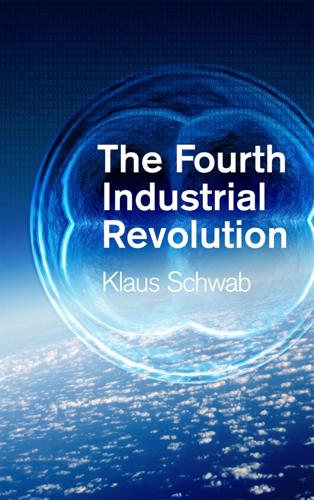
The Fourth Industrial Revolution
by
Klaus Schwab
Published 11 Jan 2016
In a world where goods and services can be produced almost everywhere, and where much of the demand for low-skilled and low-wage work is overtaken by automation, will those who can afford it congregate in countries with strong institutions and proven quality of life? Innovation-Enabling Regulation In trying to answer these questions, one thing is clear and of great importance: the countries and regions that succeed in establishing tomorrow’s preferred international norms in the main categories and fields of the new digital economy (5G communications, the use of commercial drones, the internet of things, digital health, advanced manufacturing and so on) will reap considerable economic and financial benefits. In contrast, countries that promote their own norms and rules to give advantages to their domestic producers, while also blocking foreign competitors and reducing royalties that domestic companies pay for foreign technologies, risk becoming isolated from global norms, putting these nations at risk of becoming the laggards of the new digital economy.42 As previously mentioned, the broad issue of legislation and compliance at the national or regional level will play a determining role in shaping the ecosystem in which disruptive companies operate.
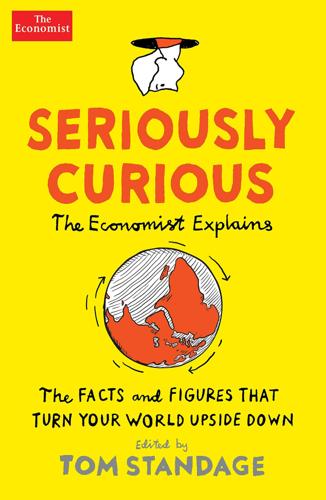
Seriously Curious: The Facts and Figures That Turn Our World Upside Down
by
Tom Standage
Published 27 Nov 2018
People may always want more bandwidth, but they are not willing to pay much more for it – an attitude that even the lure of the fanciest virtual-reality applications may not change. And building 5G networks will not be cheap. Because they operate at higher radio frequencies, 5G networks will require more antennae, base stations and fibre-optic cables. Although it can deliver data more quickly, 5G technology will arrive slowly. Analysts expect network operators to roll out 5G more gradually than the previous wireless generation – and only in places where the numbers add up. Some will initially use the technology to provide super-fast “fixed” wireless links between stationary antennae, which is less tricky to do.

The System: Who Owns the Internet, and How It Owns Us
by
James Ball
Published 19 Aug 2020
The very existence of peering agreements hints at an era of share and share alike, of a ‘fair play’ internet, but Comcast’s use of its US leverage to get access to such agreements revealed that era, if it had ever existed, was over: now that the internet is such a source of revenue and profit, whether in the content industry, retail cable or infrastructure, people will seek more revenues everywhere they can. At this point, we start to get a picture of the commercial era of the internet – cable was the plucky upstart, fighting for the consumer against the telephone giants, and then they became the incumbents ready to be challenged. Within a few years, we’re told, 5G mobile phone service will be a reality, and early tests suggest it should be around ten times to fifteen times faster than 4G at its peak.10 In practice, for many users, that means that the wireless internet could be as fast, or faster, than the wired internet we know now. At its core the wireless internet is still the fibre-optic internet – but the so-called ‘last mile’ of cable or wire to your computer (or in practical terms, probably your phone) is replaced with 3G, 4G or 5G.

Duty of Care: One NHS Doctor's Story of the Covid-19 Crisis
by
Dr Dominic Pimenta
Published 2 Sep 2020
While pollution of the air and the waters may have decreased in turn, we need to be more attuned to the dangers of information pollution, the streams of misinformation, conspiracy theories and organized bot networks that promote actively harmful behaviours. The facts are deadly important in a pandemic, and we have already had mask-deniers, 5G towers being burnt and death-toll hoaxers. If we are to grow as a mature society, we need to clean up the endless white noise of online and offline charlatans and quackery. We need to demand that same integrity, that same credulity from those in power – so far, we have consistently chosen the opposite, and that has led us to disaster.
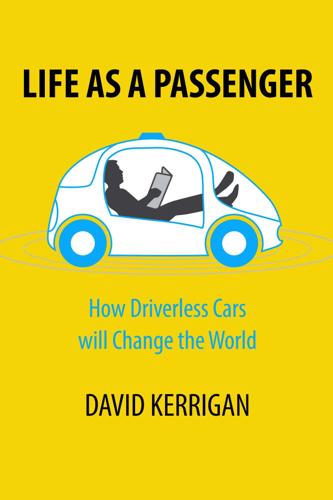
Life as a Passenger: How Driverless Cars Will Change the World
by
David Kerrigan
Published 18 Jun 2017
When autonomous vehicles become available at scale, the car will transform from just a mode of transportation into a new-age entertainment hub, with captive consumers surrounded by its technology for an average of at least five hours a week.[223] There will be a growing need for connectivity in automated cars as passengers need to stay entertained or engaged, and this may be the spur for the deployment of 5G mobile technologies. Video Killed the Radio Star The death of radio has long been predicted and exaggerated as newer media such as TV, podcast and streaming grow. Despite this, more Americans listen to AM/FM radio each week than use Facebook. Nearly 60% of the population listens to the radio daily and nearly 85% of the American people report listening to the radio at least once a week.

Rule of the Robots: How Artificial Intelligence Will Transform Everything
by
Martin Ford
Published 13 Sep 2021
Huawei claims, for example, that the installation of its technology in and around Kenya’s capital city of Nairobi led to a forty-six percent reduction in crime in 2015.31 The security and human rights implications of the technologies being developed by Chinese companies have already led to significant friction with the United States. In May 2019, Huawei was subjected to trade restrictions that resulted in a ban on the sale of U.S. technology such as software and computer chips to the company. This was driven by some combination of U.S. posturing amidst an escalating general trade war and long-held concerns that the 5G mobile phone infrastructure technology sold by the company could potentially allow the Chinese government to access communications in the United States if the equipment were installed locally.32 The U.S. also had mixed success in its effort to put significant pressure on allied countries to likewise prohibit use of Huawei’s equipment.
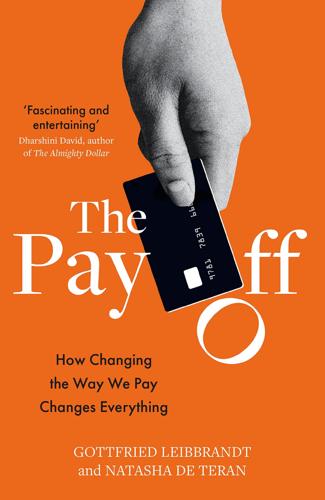
The Pay Off: How Changing the Way We Pay Changes Everything
by
Gottfried Leibbrandt
and
Natasha de Teran
Published 14 Jul 2021
Your country’s data could be scrutinised or somehow used against it; its access to cloud services impaired; its routers and software left unpatched or not upgraded; its encryption broken. In extremis, an entire country’s ability to make payments could simply be taken away. It’s odd that, despite all the current concerns over who is equipping our 5G mobile networks, few voices other than those of the regulators are raising similar fears about our payment technologies. Nations do not even have to be at loggerheads for problems to arise. Compatibility can also be an issue. Perhaps the home nation of one of your country’s key payment plumbers (a card network, say, or an eWallet provider) has different privacy laws from your own, different views on the limits of free speech, lower resilience standards or less cyber-security expertise.

Green and Prosperous Land: A Blueprint for Rescuing the British Countryside
by
Dieter Helm
Published 7 Mar 2019
Take the electricity system. By 2050 it will be digitalised and decentralised, and linked into the transport system and electric cars. It will be transformed from the passive, centrally controlled electricity grid of today. Take communications. By 2050 it will all be fibre; we can expect to have massively enhanced 5G mobile and fibre networks. Train networks will be more integrated at the international level, and there may be High Speed 2 (HS2), Crossrail 2 and full electrification, whether overhead or with batteries. Roads will be intelligent digital highways. We have a National Infrastructure Commission to look into all this and come up with a 30-year plan to present to each parliament.4 When it comes to the natural environment – the critical infrastructure on which all else depends – this sort of ambition is largely absent.
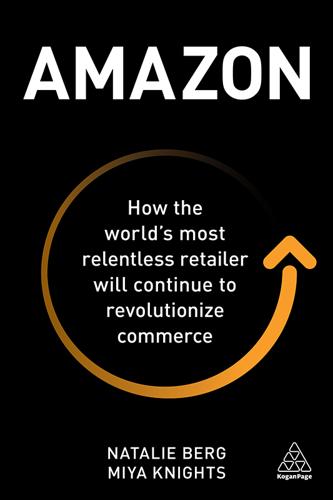
Amazon: How the World’s Most Relentless Retailer Will Continue to Revolutionize Commerce
by
Natalie Berg
and
Miya Knights
Published 28 Jan 2019
They are: ubiquitous connectivity; pervasive interfaces; and autonomous computing. We see the effects of the first of these drivers with the impact of mobile in and out of the home, as well as instore and in other public places. The more that connectivity becomes truly ubiquitous, with the development of fifth-generation (5G) mobile networks, alongside blanket Wi-Fi availability, wireless charging, and whatever device or means that enable us to be always connected and online at faster speeds, the more impatient we become for greater choice, more intuitive search and instantaneous response and fulfilment times. The context for the second technology driver, towards more ‘pervasive interfaces’, requires that we go back to the early, pre-internet days of computing, where the idea of a handheld pointing device or ‘mouse’ was relatively new.

Red Flags: Why Xi's China Is in Jeopardy
by
George Magnus
Published 10 Sep 2018
It says that science and technology should become more deeply embedded in the economy, and lays out a number of goals which will help China become a talent-rich ‘country of innovation’.20 The launch of the State Council’s industrial policy Made in China 2025 (MIC25) in 2015 and subsequent announcements took many of these initiatives further. Their focus is on key sectors, including advanced rail, ship, aviation and aerospace equipment, agricultural machinery and technology, low and new-energy vehicles, new materials, robotics, biopharmaceuticals and high-end medical equipment, integrated circuits, and 5G mobile telecommunications. Taken aback by AlphaGo’s victory, as noted earlier, China stepped up a few gears to formalise and launch nationally an ambitious AI strategy, already underway at the local government level. A year after the match, the State Council set out the Next Generation AI Development Plan with the goal of boosting China’s AI status, from being in line with competitors by 2202, to world-leading by 2025, and the world’s primary source by 2030.

Mindf*ck: Cambridge Analytica and the Plot to Break America
by
Christopher Wylie
Published 8 Oct 2019
As Cambridge Analytica discovered, this becomes the perfect environment to incubate propaganda. With the advent of home automation hubs such as Amazon Alexa and Google Home, we are seeing the first step toward the eventual integration of cyberspace with our temporal physical reality. Fifth-generation (5G) mobile and next-generation Wi-Fi are already being rolled out, laying the foundations for the “Internet of Things” (IoT) to become the new norm, where household appliances big and small will become connected to high-speed and ubiquitous Internet networks. These mundane devices, whether they are a refrigerator, a toothbrush, or a mirror, are envisaged to use sensors to begin tracking users’ behavior inside their own homes, relaying the data back to service providers.
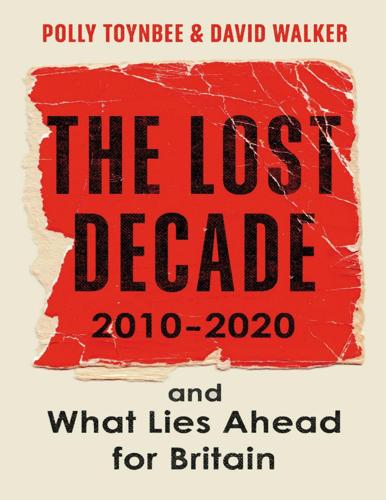
The Lost Decade: 2010–2020, and What Lies Ahead for Britain
by
Polly Toynbee
and
David Walker
Published 3 Mar 2020
By the end of the decade even Tory ministers were parroting Labour lines on nationalisation and the promise of coordinated long-term planning and investment. Ahead lies recalibration of ownership and national security. What price the security of the UK when Hinkley Point, a pivotal power plant, is run by companies answerable to Beijing? By upping data speed and capacity, 5G technology would add £164 billion to GDP by 2030: this is by definition vital infrastructure. But the Chinese IT company Huawei – answerable to the Chinese Communist Party at various points – secured a leading role in the UK’s 5G telecommunications network, cleverly recruiting former Tory politicians and lobbyists to dangle temptations in the government’s face, such as a promised new microchip research and development factory employing 400 people to be built outside Cambridge.
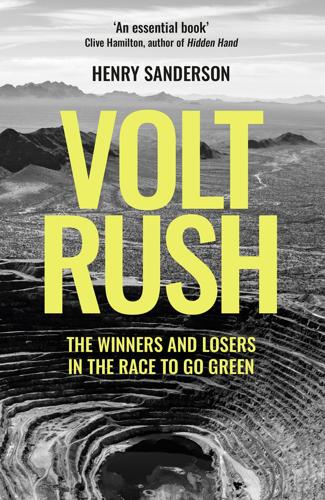
Volt Rush: The Winners and Losers in the Race to Go Green
by
Henry Sanderson
Published 12 Sep 2022
Before the nineteenth century China had been a leader in the global economy thanks to ironware and the ‘four great inventions’: papermaking, printing, gunpowder and the compass. But the invention of the steam engine in the eighteenth century had caused the UK to become a global factory and China to ‘miss an opportunity, and to decline from a peak’.28 Nevertheless, in his view, over the last forty years China had made some advancements in certain areas such as 5G technology. The current global economy was focused on renewable energy, electric cars, biotechnology and artificial intelligence, he said. The change in the car industry was an opportunity not seen in a hundred years. The battery industry could make China a ‘strong country’, economically and politically.

Stakeholder Capitalism: A Global Economy That Works for Progress, People and Planet
by
Klaus Schwab
Published 7 Jan 2021
It is just one of many Taiwanese and Hong Kong companies that provided the backbone of Shenzhen's early industrial expansion and still have a major footprint there. But Shenzhen may now be better known for its homegrown technology companies. Huawei, for example, is the single largest manufacturer of telecommunications equipment in the world, making hardware to power entire fifth generation (5G) mobile networks. It also produces smartphones that can be found all over the world (except the US), though the recent trade war between China and the US has put a break on its expansion. Huawei's success was a long time coming. In 1983, its founder, Ren Zhenfei, was just one of many immigrants trying his luck as a worker in the blossoming Shenzhen electronics industry, after a career in the Chinese army.
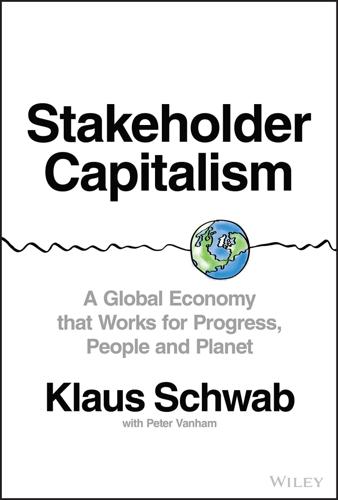
Stakeholder Capitalism: A Global Economy That Works for Progress, People and Planet
by
Klaus Schwab
and
Peter Vanham
Published 27 Jan 2021
It is just one of many Taiwanese and Hong Kong companies that provided the backbone of Shenzhen's early industrial expansion and still have a major footprint there. But Shenzhen may now be better known for its homegrown technology companies. Huawei, for example, is the single largest manufacturer of telecommunications equipment in the world, making hardware to power entire fifth generation (5G) mobile networks. It also produces smartphones that can be found all over the world (except the US), though the recent trade war between China and the US has put a break on its expansion. Huawei's success was a long time coming. In 1983, its founder, Ren Zhenfei, was just one of many immigrants trying his luck as a worker in the blossoming Shenzhen electronics industry, after a career in the Chinese army.

The Measure of Progress: Counting What Really Matters
by
Diane Coyle
Published 15 Apr 2025
These have been rapidly growing markets according to industry data, 1965 1980 1G Mobile 2G Game consoles 1975 Cable 1985 1990 Netscape 1995 DVR Google LinkedIn YouTube Roku Netflix streaming Tablet Instagram Facebook Smartphone Smart TV 2015 Snapchat Apple watch 2010 Amazon echo 2020 5G Mobile Streaming radio PlayStation VR Amazon prime streaming 7G Game console Time-shifted viewing HS DVD & Blu-Ray Twitter 2005 HDTV 2000 Netflix Yahoo DBS Satellite Chromecast Google glass 8G Game console Hulu+ Apple TV VOD Gmail figure 4.2. Timeline of innovation in consumer content delivery.
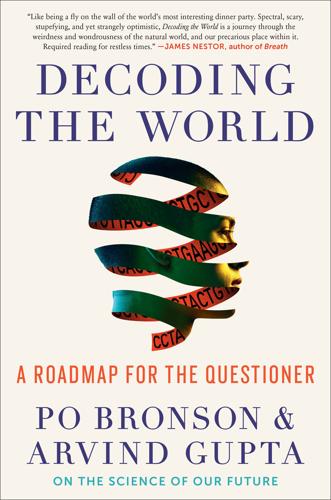
Decoding the World: A Roadmap for the Questioner
by
Po Bronson
Published 14 Jul 2020
“Yeah, that’s basically what I do.” Duncan laughed dryly. He added that the companies we see today started out five years ago, or even earlier. It was very hard to get to this point, where they’re having success. Most of the companies were building robots before society was ready for them. Today, with new robots that will run 5G technology, it’s easier. Robot designers can now count on the fact the robots will be permanently and completely online, and everything the robot senses can feed into the supercomputer in the cloud. Before this moment, decision-making had to happen in the robot brain. Which required a bigger computer on board.
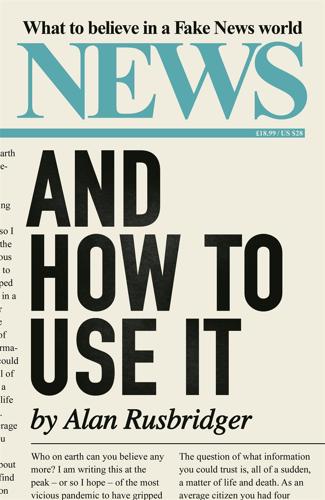
News and How to Use It: What to Believe in a Fake News World
by
Alan Rusbridger
Published 26 Nov 2020
Some news outlets – initially, at least – seemed unable to imagine the scale of what was happening: it was easier to report on what videos Boris Johnson was watching in his hospital bed than on the hundreds dying every day all around. The newsrooms that had jettisoned their health or science correspondents struggled. The idiots who suggested that 5G phone masts could be spreading the disease encouraged arson and trashed their own brand. So, it was a mixed picture. Covid-19 could not have announced itself at a worse time in terms of the question about whom to believe. Survey after survey has shown unprecedented confusion over where to place trust.

Greater: Britain After the Storm
by
Penny Mordaunt
and
Chris Lewis
Published 19 May 2021
There’s an opportunity to show leadership here and it connects strongly to the equalities issues discussed later in this book. This is not an argument to censor free speech, only that it be subject to the law. In any case, it would be like trying to hold back the sea. Without reform, we risk drowning our most sacred institutions in a cheese dream conspiracy theory of David-Icke-deranged evil space lizards torching 5G towers on behalf of The Bilderberg Group.4 It would be deeply comic, but for its profoundly tragic consequences as we saw in the American Capitol in January 2021. So far, the private sector has moved faster than democratic institutions to censor the most violent noises coming from the looneyverse. The social media companies began that finally when placed under pressure to remove Donald Trump from their platforms.

Visual Thinking: The Hidden Gifts of People Who Think in Pictures, Patterns, and Abstractions
by
Temple Grandin, Ph.d.
Published 11 Oct 2022
Engineering Failure Analysis 16 (2009): 2098–2113. Smith, R. “U.S. Water Supply Has Few Protections against Hacking.” Wall Street Journal, February 12, 2021. https://www.wsj.com/articles/u-s-water-supply-has-few-protections-against-hacking-11613154238. Solkin, M. “Electromagnetic Interference Hazards in Flight and the 5G Mobile Phone: Review of Critical Issues in Aviation Security.” Special issue “10th International Conference on Air Transport—INAIR 2021, towards Aviation Revival.” Transportation Research Procedia 59 (2021): 310–18. https://doi.org/10.1016/j.trpro.2021.11.123. Sparks, J. “Ethiopian Airlines Crash, Anguish and Anger at Funeral for Young Pilot.”

Reset
by
Ronald J. Deibert
Published 14 Aug 2020
See also climate change Amazon and, 239–240, 241–242 Apple and, 227, 229, 240, 247 communication technologies and, 210, 213, 227–229, 230–242, 297, 329–330 Facebook and, 239, 240 Google and, 234, 239, 240, 241 Microsoft and, 239, 241 protection efforts, 33, 227, 239, 240, 246–247, 308, 318–319 social media and, 30, 212, 239, 240 Equinor, 241 Erdoğan, Recep Tayyip, 120 espionage, 45, 255, 314 digital, 84, 122–123, 138–139, 149–150, 197, 204 European Union (EU), 231, 279, 325 General Data Protection Regulation, 298 Evident (surveillance system), 148–149 e-waste, 231, 242–246, 248 ExxonMobil, 241 Facebook, 43, 48, 51, 93–94, 306 backlash against, 260–261 data harvesting by, 53, 56–57, 60, 67–68 data sharing by, 118–119, 183, 185 emotional manipulation by, 99–100, 102–103 and the environment, 239, 240 and false information, 81, 82, 84–85, 124–126, 131, 269 global reach, 94, 95, 107–108, 202 privacy/security issues, 71, 72, 73, 75, 195, 266–267 targeted advertising on, 66–67, 130–131 facial recognition technology, 75, 168–169, 173, 174–176, 184, 295. See also biometric data China and, 163–164, 165–167 fact-checking, 83, 87, 130, 267–268, 269 Farrow, Ronan, 254 Feldstein, Steven, 166 Ferguson, Andrew, 174–175 FinTech, 61–62 “Five Eyes” alliance, 25, 40 5G technology, 13, 15–16, 82 Foreign Intelligence Surveillance Court, 285–286 Foxconn, 225, 227, 228, 229–230 Freedom House, 200 Freedom Online Coalition, 326 Frischmann, Brett, 96 Front de libération du Québec (flq), 192, 198 Fuller, Buckminster, 263 Gabunada, Nic, 125 games (online), 63–64, 76, 98–99, 102, 105–106, 232 Gamma Group, 150–151 General Electric, 181–182 GhostNet, 204 Giant Oak Inc., 183 GlaxoSmithKline, 71–72 Global E-waste Monitor, 243 Goldman, Eric, 172 Google, 60, 108, 130, 234, 306 data harvesting by, 51, 65, 182–183 and the environment, 234, 239, 240, 241 Google Hangouts, 231–232 Google Maps, 15, 51, 52, 64 monetization of, 48, 64, 130, 241 privacy/security issues, 17, 44, 51, 66, 77–78, 289–290 surveillance by, 48, 50, 51–52, 60 governments.
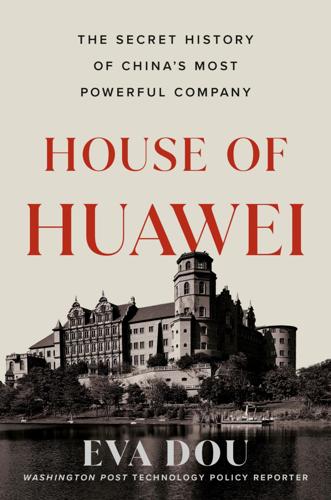
House of Huawei: The Secret History of China's Most Powerful Company
by
Eva Dou
Published 14 Jan 2025
Now mobile engineers expected 5G to bring one-thousand-fold gains in network capacity, making possible data-intensive applications that had previously been the realm of science fiction: self-driving cars, perhaps, or remote surgeries, self-regulating factories, and next-generation surveillance systems. As the date of the 3GPP summit approached, Tong and his team found themselves on firm footing. Through the help of research partnerships with prestigious institutions across the globe, they had filed for a long list of patents in many areas of 5G technology. One of the technologies that they were most excited about was something called “polar coding,” a new way of cleaning up the noise in data transmissions. As data speeds increased from 4G to 5G, it was crucial to find better ways of reducing the noise. Huawei’s advances in polar coding reflected how it was leaning on top academic researchers the world over to help it develop trailblazing technologies.
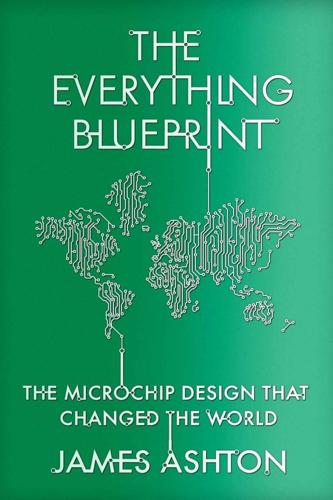
The Everything Blueprint: The Microchip Design That Changed the World
by
James Ashton
Published 11 May 2023
Qualcomm was a national and regional champion and had been rooted in San Diego, California, since its foundation in 1985 by Irwin Jacobs, a one-time professor of computer science and engineering at the city’s university. The company had even put its name to the local sports stadium that had hosted Super Bowls and Major League Soccer. More importantly, Qualcomm (a portmanteau of Quality Communications) was a key developer of 5G technology vital for use in the defence industry, among others, after proliferating the code division multiple access (CDMA) technology standard for radio communications. And it had no intention of losing its independence. With customers such as Apple and the Pentagon, the US government was attuned to the sensitivities of a change of ownership that might challenge its hegemony.

The Future Is Asian
by
Parag Khanna
Published 5 Feb 2019
Funds in Beijing and Shanghai are sitting on tens of billions of dollars they have been mandated to invest in their neighbors’ high-potential sectors from infrastructure and commodities to banks and telecoms. From Pakistan to the Philippines, China is laying down fiber-optic cables and setting up 5G mobile phone operators for hundreds of millions of people. Most of the world’s largest engineering, procurement, and construction (EPC) companies are Asian, with giant contractors in China, South Korea, Japan, India, Turkey, and Saudi Arabia—and all of them want to build across Asia’s jigsaw borders. China already trades three times more with Asian countries than Japan does, making the renminbi ever more attractive as a currency for intra-Asian trade.
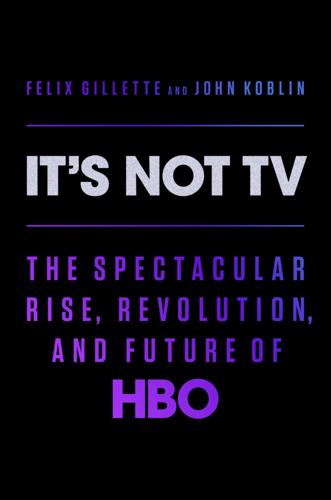
It's Not TV: The Spectacular Rise, Revolution, and Future of HBO
by
Felix Gillette
and
John Koblin
Published 1 Nov 2022
“You’re now in the entertainment business, John,” Plepler interjected. “There are no secrets.” Stankey went on to explain AT&T’s broader rationale for buying Time Warner. The telecom business, he said, was on the verge of rolling out its next generation of wireless network technology, known as 5G. Mobile upload and download speeds were poised to get much faster. Soon, wireless networks would be behaving more like the seamless internet connections inside office buildings. Everything would be instantaneous, no delays. Stankey said that 5G was on the verge of ushering in a wave of new mobile technologies.
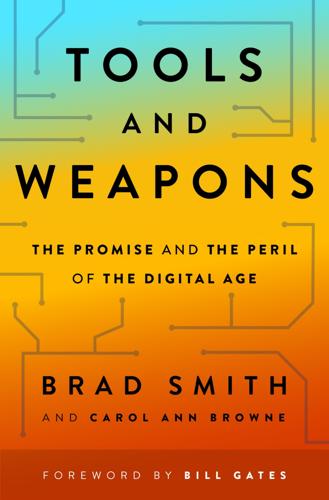
Tools and Weapons: The Promise and the Peril of the Digital Age
by
Brad Smith
and
Carol Ann Browne
Published 9 Sep 2019
(Washington, DC: Brookings Institution Press, 2015). Back to note reference 17. David E. Sanger, Julian E. Barnes, Raymond Zhong, and Marc Santora, “In 5G Race With China, U.S. Pushes Allies to Fight Huawei,” New York Times, January 26, 2019, https://www.nytimes.com/2019/01/26/us/politics/huawei-china-us-5g-technology.html. Back to note reference 18. Sean Gallagher, “Photos of an NSA ‘upgrade’ factory shows Cisco router getting implant,” ARS Technica, May 14, 2014, https://arstechnica.com/tech-policy/2014/05/photos-of-an-nsa-upgrade-factory-show-cisco-router-getting-implant/. Back to note reference 19.

The Book of Why: The New Science of Cause and Effect
by
Judea Pearl
and
Dana Mackenzie
Published 1 Mar 2018
The complex and fascinating story of turbo and low-density parity-check codes has not been told in a truly layman-friendly form, but good starting points are Costello and Forney (2007) and Hardesty (2010a, 2010b). The crucial realization that turbo codes work by the belief propagation algorithm stems from McEliece, David, and Cheng (1998). Efficient codes continue to be a battleground for wireless communications; Carlton (2016) takes a look at the current contenders for “5G” phones (due out in the 2020s). References Breast Cancer Surveillance Consortium (BCSC). (2009). Performance measures for 1,838,372 screening mammography examinations from 2004 to 2008 by age. Available at: http://www.bcsc-research .org/statistics/performance/screening/2009/perf_age.html (accessed October 12, 2016).

Sandy Hook: An American Tragedy and the Battle for Truth
by
Elizabeth Williamson
Published 8 Mar 2022
Miller categorizes conspiracy theorists into three groups. First are profiteers like Jones. Second are people who grasp at conspiracy theories to meet a need, either psychological or political. The third group encompasses people whose conspiracy beliefs spur them to action, whether it’s setting fire to 5G towers, protesting in front of vaccine clinics, or harassing the families of shooting victims. “I don’t think we have a good sense of what takes someone from just passively believing to actively acting on some of these beliefs,” Miller said. “The problem is, there’s such a small number of people who actually act on these beliefs that it’s hard to study them.”

The Quiet Coup: Neoliberalism and the Looting of America
by
Mehrsa Baradaran
Published 7 May 2024
Fauci didn’t join forces to release a “plandemic” to sell us drugs that we didn’t need, it’s not outlandish to imagine drug companies covering up risk to extract more financial gain.15 The 2020 election wasn’t stolen from Trump—but Republican gerrymandering and attacks on voting rights, coupled with dark money PAC donations, have greatly diminished the promise of “one person, one vote.” There is no high-level, “deep state” surveillance apparatus run by Hillary Clinton, Bill Gates isn’t surreptitiously inserting microchips into our bodies, and 5G towers aren’t being used to impose social control—but the NSA spied on Americans, and tech companies routinely monitor our online behavior and exploit our data for profit. Space lasers didn’t cause the Camp Fire—but fossil fuel companies have been using dark money for decades to sow doubt about the science of climate change.
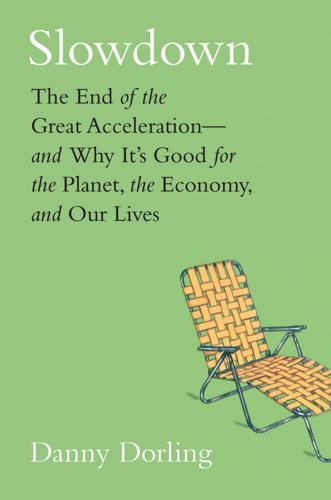
Slowdown: The End of the Great Acceleration―and Why It’s Good for the Planet, the Economy, and Our Lives
by
Danny Dorling
and
Kirsten McClure
Published 18 May 2020
Determine what is very innovative and what is not, and ask whether we are still moving as rapidly forward now. Being able to send a letter was once revolutionary. Being able to flash a message on a friend’s phone is what children now do (and adults tend not to). Today even our washing machines can talk to one another. But why would they? Will data be transmitted between washing machines using 5G technology—or will it always go from one washing machine to some central control hub? If our washing machines are connected to one another in the brave new Internet of Things—then can we expect them to revolt?!19 The washing machine itself was a great leap forward. Getting washing machines to talk to one another is not.
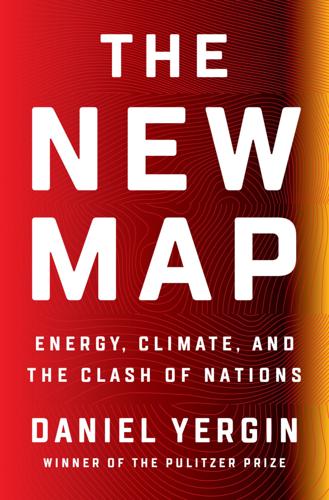
The New Map: Energy, Climate, and the Clash of Nations
by
Daniel Yergin
Published 14 Sep 2020
See also shareholder activism Doha, Qatar, 278–79 Donbas region, 79 Donilon, Thomas, 59 Dow, 29–30 drone technology, 251–52, 286 Drucker, Peter, 162 Dutch East Indies, 140 Dyukov, Alexander, 76 Eagle Ford Shale, 17, 24, 24, 42, 55 Earth Justice, 51 earthquakes, 28 East Asia, 33 East China Sea, 148 Eastern Europe, 88, 109 Eastern Mediterranean energy reserves, 253–58 East Turkistan Islamic Movement, 180 Eberstadt, Nicholas, 132 Ebola epidemic, 315 “economic miracle” countries, 33, 74–75 Economic Survey (India), 408 Economist, The, 276, 286, 307–8 Edison, Thomas, 329 Egypt and Arab nationalism, 203–5, 214 and Arab Spring protests, 237–38 and Eastern Mediterranean petroleum resources, 254, 256–57 and historical context of Middle East conflicts, 196 and Iranian Revolution, 209 and Islamic fundamentalism, 259–63, 264, 270 and Qatar, 306 and Syrian civil war, 251 Einstein, Albert, 394–95 election interference, 70, 78, 81, 103–4 electric power and infrastructure, xix, 12–13, 184, 186, 234, 345–46, 404 electric vehicles (EVs), xviii, 327–46, 368–71, 415, 427, 428, 430 embassy bombings in Kenya and Tanzania (1998), 264–65 emissions standards, 335–37, 339, 346 Energiewende (“energy turn”), 86–87, 395–96 energy security and independence and Canadian imports to U.S., 47 and China’s development of petroleum resources, 160 and current geopolitical challenges, 427 and Eastern Mediterranean petroleum resources, 254–57 and electric vehicles, 341 and energy transition in the developing world, 408–9 and energy transition in U.S., xv and gas supplies to Europe, 84–89 and Nixon administration, 53 and opposition to Russian gas exports, 109 and politics of U.S. shale production, 55 and Russia-Europe relations, 83 and South China Sea tensions, 171 and varied approaches to climate change, 412–13 “energy superpower” status, xv, 57, 70–71 Energy Transfer Partners, 49, 51 energy transition and breakthrough energy technologies, 403–6 and carbon capture technology, 419 and current global challenges, xiii–xx, 427–29 and developing world, 407–10 emerging consensus on climate issues, 382–87 and “green deal” proposals, 388–91, 391–93 historical perspective on, 377–79 and IPCC, 379–80 and Paris climate agreement, 380–82 and push for renewable energy sources, 394, 400–401 and U.S. position, xv and varied approaches to climate change, 412 Eni, 256 environmental issues and activism and American shale gas reserves, 113 and Fukushima nuclear disaster, 87 and global power politics, xiii and hydraulic fracturing, 28–29 and indoor air pollution in developing countries, 407–8 and opposition to pipeline projects, 46–51 and U.S. transition to LNG exporter, 37 See also carbon emissions; climate change Environmental Defense Fund, 28–29 EOG, 14–17 Erbil, Kurdistan, 232 Erdoğan, Recep Tayyip, 247, 305, 315 ESPO pipeline, 118 Estonia, 69 EU Council, 102 Eurasian Economic Union, 92, 93, 189 Europe and China Belt and Road Initiative, 182, 184 and Eastern Mediterranean petroleum resources, 258 and impact of U.S. shale and LNG, 38, 55, 61–62 and push for renewable energy sources, 398–99 See also European Union (EU); specific countries European Central Bank, 187 European Commission, 388–90 European Union (EU) and energy security issues in Europe, 85–88 and energy transition challenges, 381 and “green deal” proposals, 388–91 and Nord Stream 2 pipeline, 102, 104, 108–9 and Russian annexation of Crimea, 95 and Russian gas supplies to Europe, 85 and Russian geopolitical ambitions, 70, 115 and Russia-Ukraine tensions, 93 and Syrian refugees, 248 Exclusive Economic Zones (EEZs) and territorial waters, 142–45, 148, 159, 170, 257 extraterritoriality, 108, 139 ExxonMobil, 15, 65, 76, 395 Fabius, Laurent, 381 Fahd bin Abdulaziz Al Saud, 214 Faisal I, King of Iraq, 198–200, 202–3 Falcon rockets, 332 Farouk I, King of Egypt, 203 Federal Bureau of Investigation (FBI), 103 financial crisis of 2008, 26–27, 333, 429 Financial Stability Board, 385 Financial Times, 113, 273 financing for energy projects and China Belt and Road Initiative, 182–83 and “green recovery” proposals, 428 and push for renewable energy sources, 397, 400–401 and Russian interests in Central Asia, 125–26 and Russian LNG, 112 Fink, Larry, 385 First Opium War, 139 First Sino-Japanese War, 154 5G technology, 175, 354 “flight shaming,” 387, 415 Ford, Bill (and Ford Motor Company), 329, 338, 346, 351, 369–70, 373 Ford, Henry, 372–73 Fort Laramie Treaty, 49 Fracking Debate, The (Raimi), 28 France, 138, 195–96, 201–2, 227, 232, 247, 343 Freeport LNG facility, 24, 35–37, 38 Free Syrian Army (FSA), 244 Fukushima nuclear accident, 63, 87, 401, 430 G7, 129 G8, 129 G20, 129, 280, 319–20, 388, 426 Gadhafi, Muammar, 239 Gadkari, Nitin, 342 Gaidar, Yegor, 73 gasoline and Auto-Tech advances, 368, 370–72 and “clean diesel,” 335 and consumer behaviors, 421 Mexican imports, 41, 43 and oil embargo of 1973, 53–54 and oil price war, 316–17, 323 and pipeline battles in U.S., 47 Gates, Bill, 315, 385–86 Gates, Robert, 237–38 Gaza, 253 Gazprom, 76, 80, 86, 89, 105, 107–8, 109, 125 Geely, 338 General Motors, 171, 329, 333–34, 369 Georges-Picot, François, 194–95, 196–98, 201–2 Georgia (country), 82 Germany and “clean diesel,” 336 economic growth before World War I, 132 and energy security issues in Europe, 86–88 and energy transition challenges, xix and global order after First World War, 200 and Iranian nuclear ambitions, 223, 227 and Khashoggi affair, 305–6 and Nord Stream 2 pipeline, 102, 104–5, 107–8 and push for renewable energy sources, 395–96, 400–401 and Russia’s “pivot to the east,” 117 and Syrian refugees, 248 and the Thucydides Trap, 131, 154 and U.S.

Nexus: A Brief History of Information Networks From the Stone Age to AI
by
Yuval Noah Harari
Published 9 Sep 2024
They retweeted or recommended certain human-produced content, but they couldn’t create new ideas themselves, nor could they forge intimate bonds with humans. However, the new breed of generative AI tools like ChatGPT can do exactly that. In a 2023 study, published in Science Advances, researchers asked humans and ChatGPT to create both accurate and deliberately misleading short texts on issues such as vaccines, 5G technology, climate change, and evolution. The texts were then presented to seven hundred humans, who were asked to evaluate their reliability. The humans were good at recognizing the falsity of human-produced disinformation but tended to regard AI-produced disinformation as accurate.51 So, what happens to democratic debates when millions—and eventually billions—of highly intelligent bots are not only composing extremely compelling political manifestos and creating deepfake images and videos but also able to win our trust and friendship?
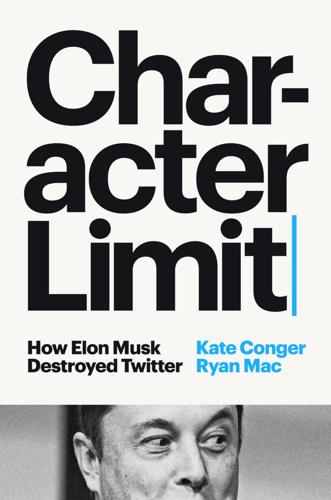
Character Limit: How Elon Musk Destroyed Twitter
by
Kate Conger
and
Ryan Mac
Published 17 Sep 2024
She was fiercely protective of her connection with Dorsey, and some colleagues complained that she didn’t give them enough insight into his movements and opinions. In March 2020, Gadde realized that Twitter would need new rules banning misinformation about COVID so it could take down tweets that promoted ineffective treatments or spread conspiracy theories like the idea that 5G technology caused the virus. But there was a problem—Twitter had no framework for tackling misinformation and no staff responsible for policing it. Unlike at other social media companies—which would simply swoop in to remove a post without explanation, and then retroactively justify the decision—at Twitter, there had to be a rule first, and the rule had to be public.

Four Battlegrounds
by
Paul Scharre
Published 18 Jan 2023
; Farai Mudzingwa, “Government Acknowledges Facial Recognition System In The Works,” Techzim, June 13, 2018, https://www.techzim.co.zw/2018/06/government-acknowledges-facial-recognition-system-in-the-works/ (page discontinued), https://web.archive.org/web/20180615155528/https:/www.techzim.co.zw/2018/06/government-acknowledges-facial-recognition-system-in-the-works/. 107ZTE: Angus Berwick, “How ZTE Helps Venezuela Create China-Style Social Control,” Reuters, November 14, 2018, https://www.reuters.com/investigates/special-report/venezuela-zte/. 107other countries using Chinese surveillance technology: Mozur, Kessel, and Chan, “Made in China, Exported to the World.” 107Global Spread of Chinese Public Surveillance Technology: Greitens, “‘Surveillance with Chinese Characteristics,’” 40. 107Huawei: Bruce Gilley, “Huawei’s Fixed Line to Beijing,” Far Eastern Economic Review (December 28, 2000–January 4, 2001), http://www.web.pdx.edu/~gilleyb/Huawei_FEER28Dec2000.pdf; Sarah Dai, “China Adds Huawei, Hikvision to Expanded ‘National Team’ Spearheading Country’s AI Efforts,” South China Morning Post, August 30, 2019, https://www.scmp.com/tech/big-tech/article/3024966/china-adds-huawei-hikvision-expanded-national-team-spearheading. 107world’s largest provider of telecom: Brian Fung, “How China’s Huawei Took the Lead over U.S. Companies in 5G Technology,” Washington Post, April 10, 2019, https://www.washingtonpost.com/technology/2019/04/10/us-spat-with-huawei-explained/. 107“safe city” solutions: Greitens, “‘Surveillance with Chinese Characteristics,’” 37. 1072,000 cameras to Nairobi: “Video Surveillance as the Foundation of ‘Safe City’ in Kenya,” Huawei, 2019, https://www.huawei.com/en/industry-insights/technology/digital-transformation/video/video-surveillance-as-the-foundation-of-safe-city-in-kenya (page discontinued). 107surveillance system of 1,000 cameras: “Chinese Facial Recognition Tech Installed in Nations Vulnerable to Abuse,” CBS News, October 16, 2019, https://www.cbsnews.com/news/china-huawei-face-recognition-cameras-serbia-other-countries-questionable-human-rights-2019-10-16/; Dusan Stojanovic, “Chinese Snooping Tech Spreads to Nations Vulnerable to Abuse,” Associated Press, October 17, 2019, https://apnews.com/9fd1c38594444d44acfe25ef5f7d6ba0. 107“AI, cloud computing, big data, and IoT”: Huawei Investment & Holding Co., Ltd. 2018 Annual Report (Huawei, 2018), 30, https://www-file.huawei.com/-/media/corporate/pdf/annual-report/annual_report2018_en_v2.pdf?